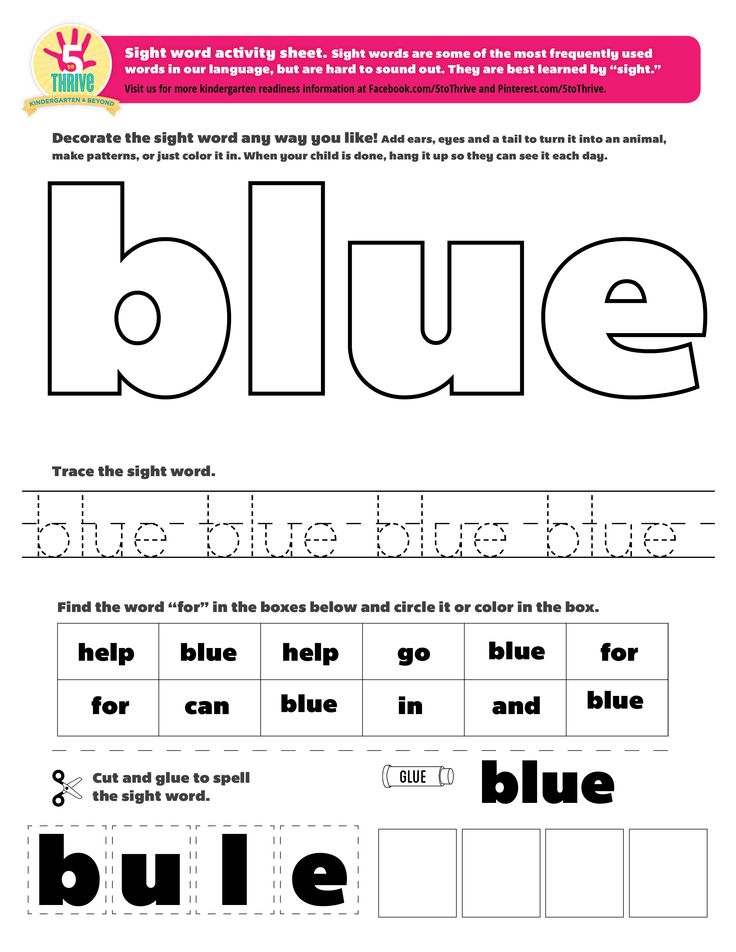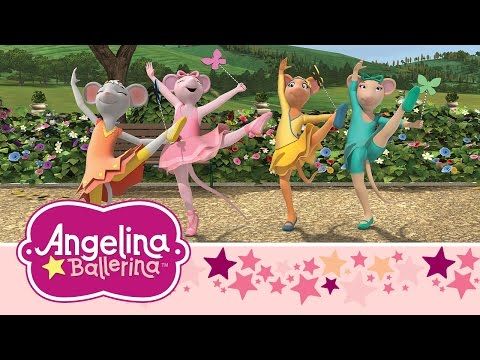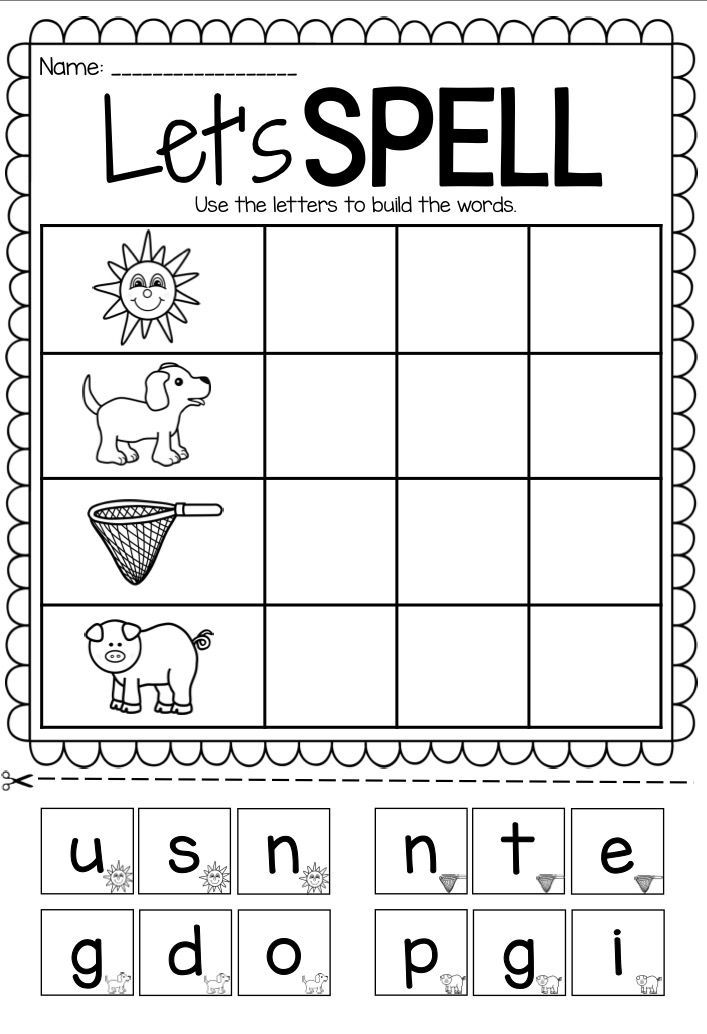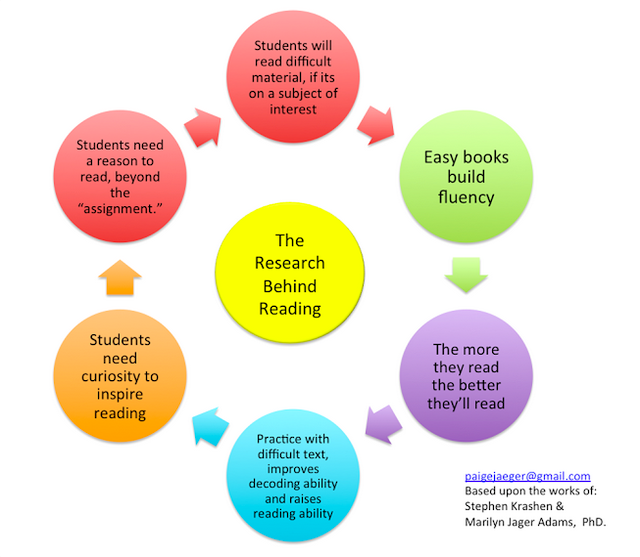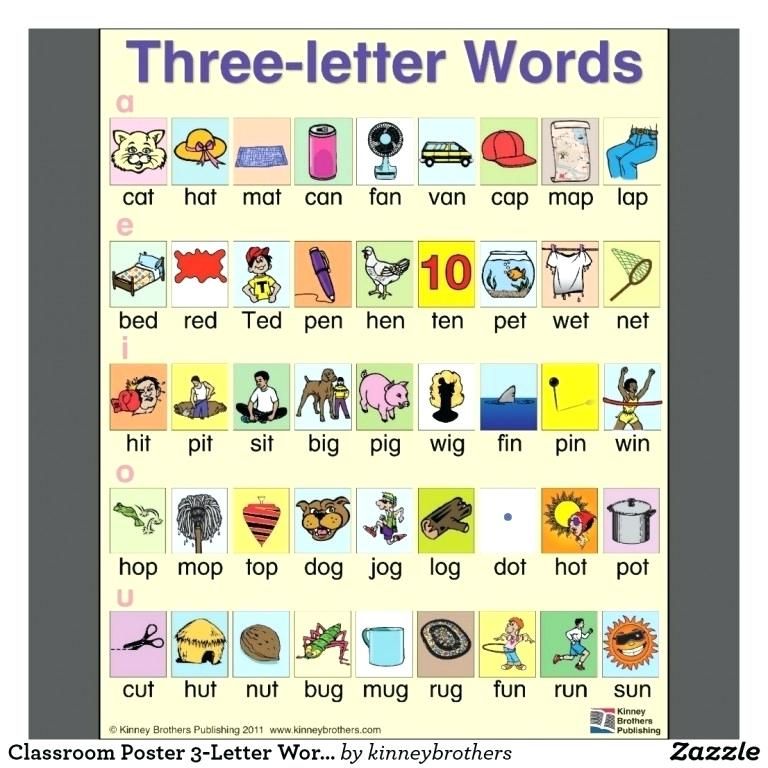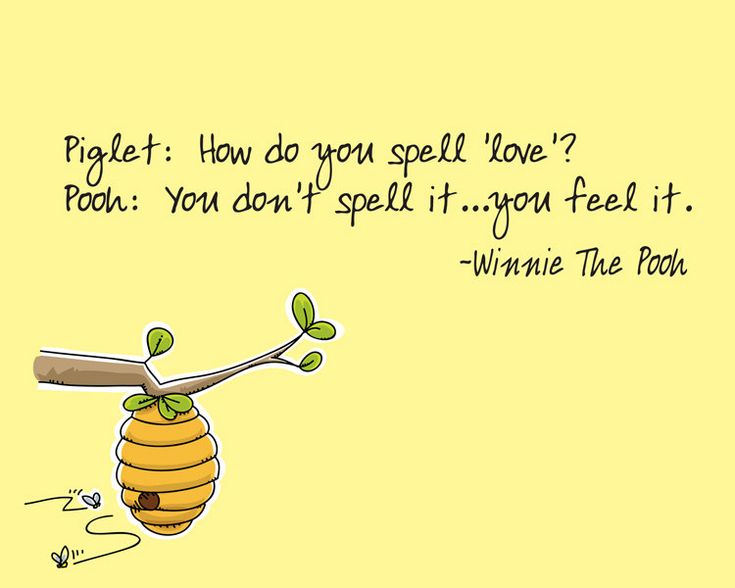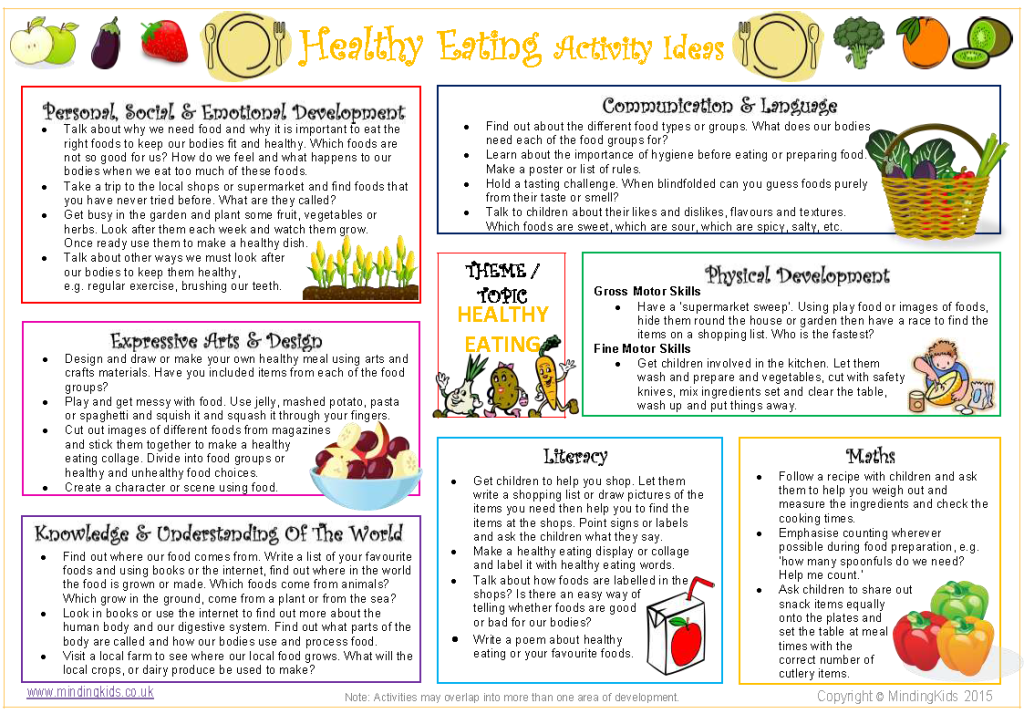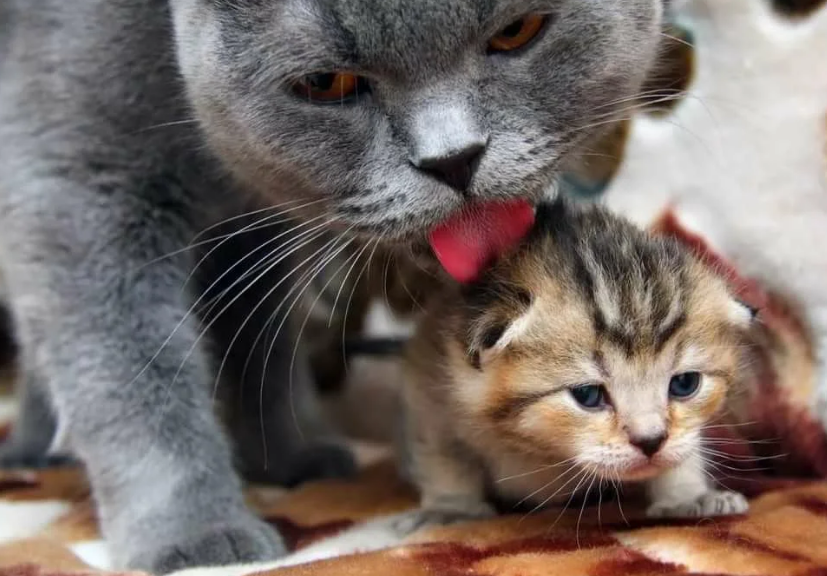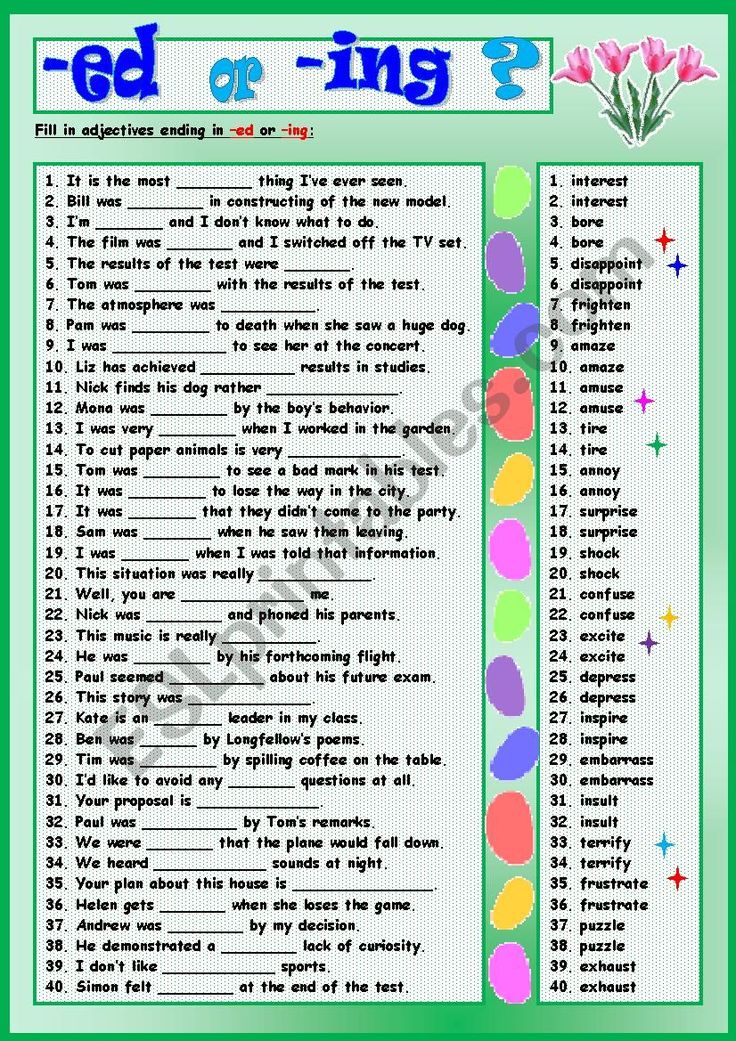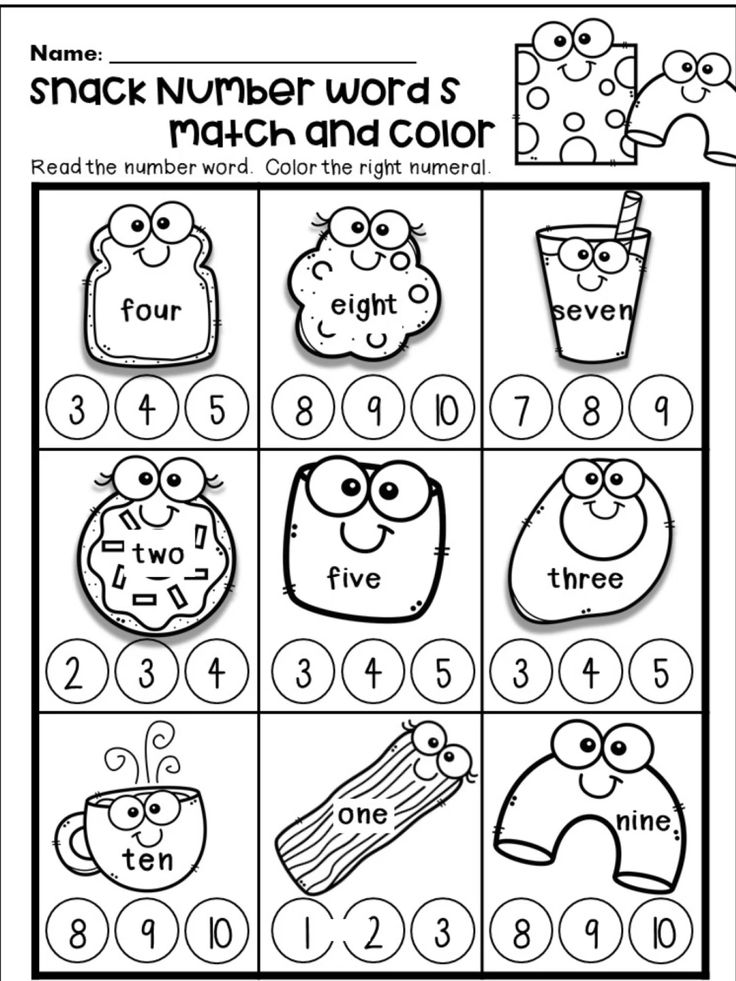Sight words for four year olds
Three Letter Words for 4 Year Olds
Do you want to start teaching your child to read and want to know what words he needs to learn? If you do, then read on for suitable words and teaching tips.
Dolch Sight Words
If you are going to teach your four year old to read, then you might want to know about Dolch sight words. These are a good place to start. Two hundred twenty words have been identified as high frequency words and the list is spread out over the years from preschool to third grade. Of course, these are not the only words he would need to learn, but the Dolch words show up in between 50 and 75 percent of all the words in books, newspapers, and magazines.
Here are the Dolch preschool sight words:
a, and, away, big, blue, can, come, down, find, for, funny, go, help, here, I, in, is, it, jump, little, look, make, me, my, not, one, play, red, run, said, see, the, three, to, two, up, we, where, yellow, you
Advertisement
Three Letter Words
Thirteen of the Dolch preschool sight words are three letter words. Other three letter, high frequency words for four year olds include:
all, and, any, are, bad, bet, big, box, boy, bye, can, car, cat, cup, cut, day, did, dog, dry, eat, eve, fly, for, get, had, has, her, him, his, hot, how, huh, hum, let, lot, man, may, mom, new, not, off, old, one, our, out, pet, put, red, run, saw, say, see, she, sit, some, the, too, top, try, two, use, was, way, who, why, yes, yet, you
Three letter words four year olds
Click to View & DownloadTeaching Your Four Year Old to Read
Before you start teaching your child to read, they need to master certain skills. These are:
- Knowing the difference between a picture and print
- Being familiar with books and know that you read from left to right
- Knowing the upper and lower case letters of the alphabet
Next you would start teaching the sounds that are associated with each letter.
- You could use blocks with the letters on them and put them together to make words.
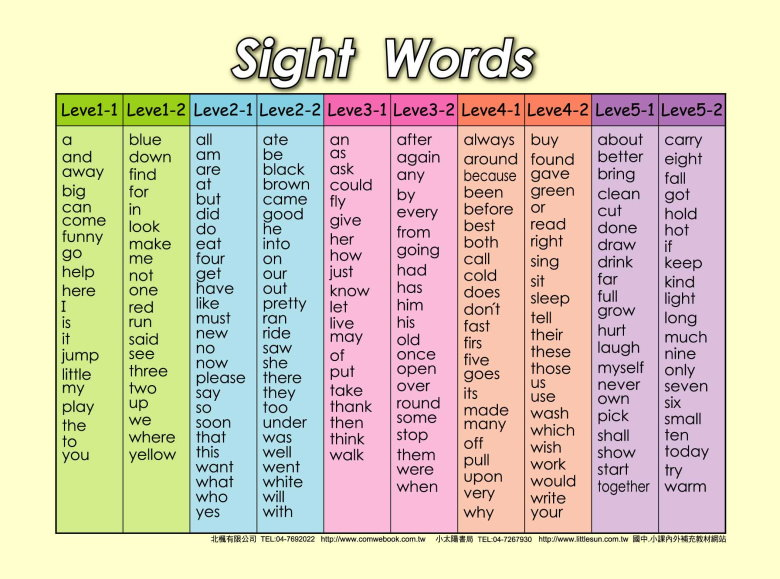
- You could also use cards with letters on them, like flash cards.
- Work on what sound comes at the start, middle, and end of a word.
- Practice with consonant-vowel-consonant word flashcards.
Advertisement
Tips on Teaching the Alphabet
A good place to start is with the ABC Song. While you are reading to your child, which should be done at least once a day, point out a letter occasionally and ask him what it is. Pick a letter each week and do activities with something that starts with that letter. For example, ideas for A - D include:
- make applesauce or art prints with half an apple dipped in paint
- blow bubbles
- make cookies
- make doughnuts from biscuits
Letters can be made lots of ways.
- Play Do or clay can be rolled into a worm and the letters can be shaped.
- You can take a roll of cookie dough and either make some letters with it or use cookie cutters.
- Licorice is another good food to make letters with.
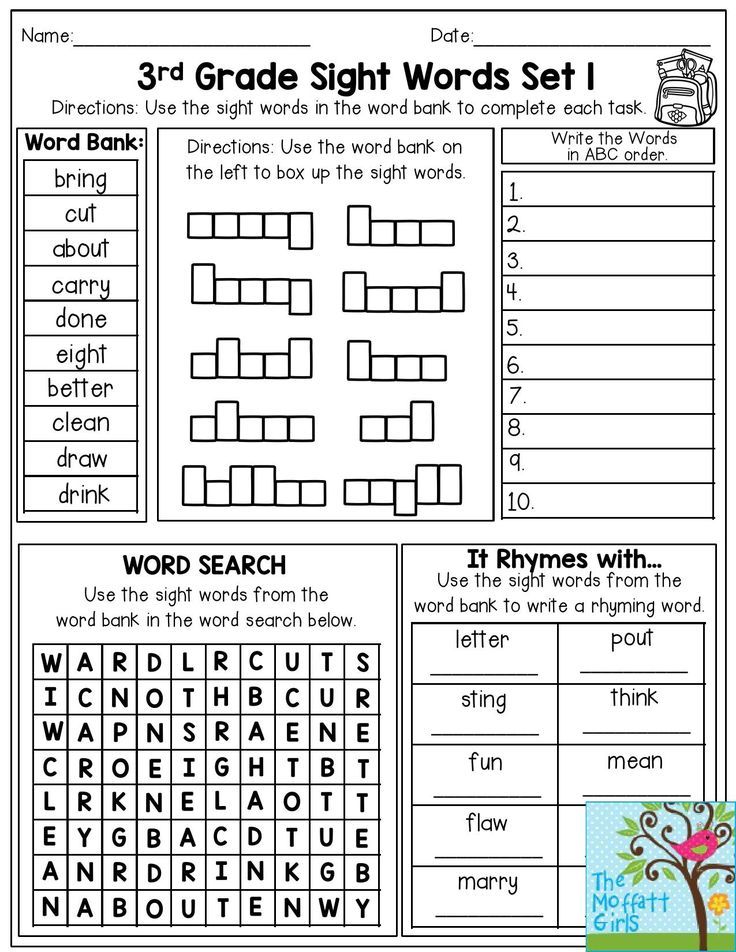
- You could also buy cheap cereal and glue the pieces on paper where you have written a letter.
Start looking around and you will find lots of ways to form letters and make learning them fun.
8 Ways to Teach Sight Words to Preschoolers (2023)
Learning sight words is a critical skill for kids to learn how to read!
Teaching children how to learn sight words can be a challenge.
Why?
Because it all comes down to memorization. There is not a way to sound out these words. In case you are unfamiliar, sight words are words like that don’t follow the traditional rules of spelling or can’t be sounded out phonetically. Some examples of sight words are who, does, and come.
To give your preschooler a great jump start to reading, I have come up with 8 EASY ways that you can teach your preschooler sight words!
#1. Start With TWO Letter Sight Words
Does anyone have a toddler that says no to absolutely everything?
You’ll be hearing it all over again when you start teaching sight words because the word “no” is one of the easiest ones to recognize!
When you start out teaching a child sight words, it’s important to start small and build up to longer words.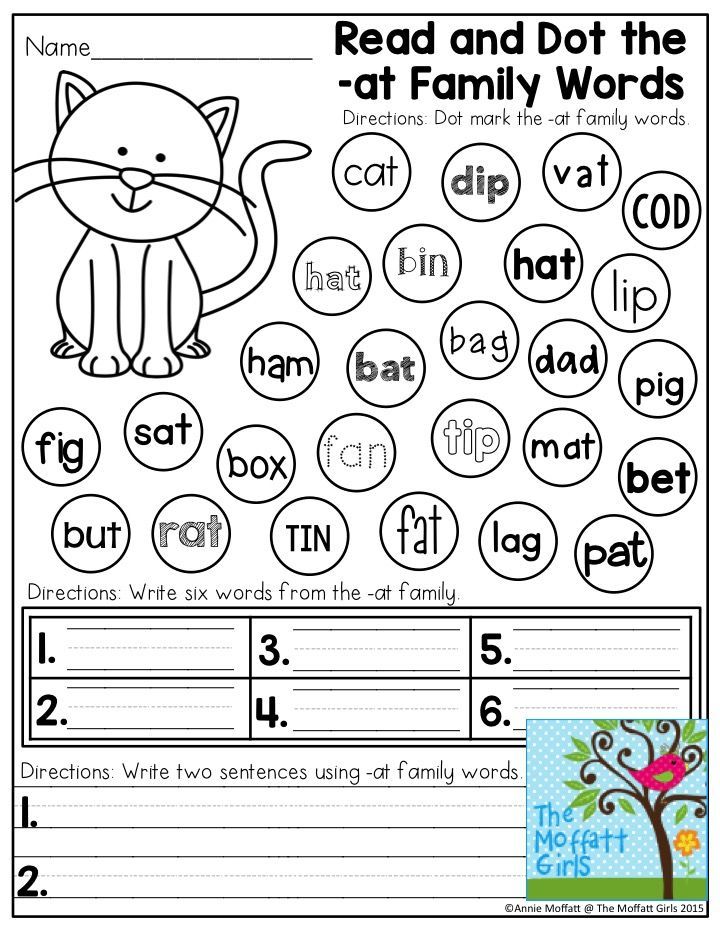 Starting with TWO letter words for them to memorize is going to be a lot easier than FOUR letter words.
Starting with TWO letter words for them to memorize is going to be a lot easier than FOUR letter words.
Here are some two-letter sight words that you can start with: of, to, is, in, it, he, on, as, at, be, or, by, we, an, do, if, up, so, no, go
Once your little one has mastered the two-letter words, you can move onto three or more letter words!
While some of the words on this list can be sounded out and others can not, I think it’s easier to have your child just memorize the words so they can say it at a glance.
Here is a list of sight words for each age/grade level?
I use the above sight word checklist when I am deciding what new words to teach my daughter!
#2. Choose Sight Words In Your Child’s Favorite Books
I have a quiz for you.
How many sight words can you find in this sentence below from the book, Where the Wild Things Are?
“His mother called him “WILD THING!” and Max said “I’LL EAT YOU UP!” so he was sent to bed without eating anything.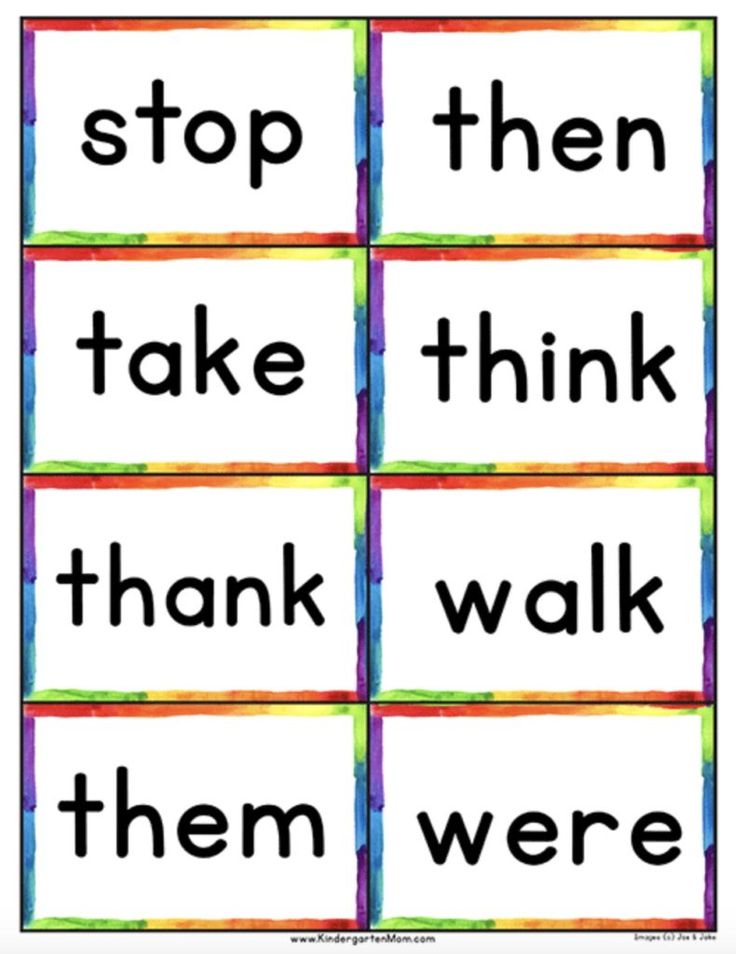 ”
”
I found 12 sight words in that one sentence!
- (his, him, wild, and, said, eat, you, up, so, he, was, to)
Sight words are referred to as high-frequency words because some of them are the most common words in the English language!
When you are reading to a child, and they are starting to learn sight words, make sure to point out the words in their favorite books. They will be more interested in learning the sight words if it’s in a context they enjoy! We have a subscription to Highlights Magazine, and my daughter loves pointing out which words she recognizes.
Your kids will feel so proud when they can read a few words in their favorite stories. It will encourage them to want to learn more!
#3. Practice Daily
Just like teaching your kids the alphabet, numbers, and shapes, it takes repetition for them to understand the material!
At least a few minutes of work on sight words each day will help them immensely when it comes to memorizing sight words.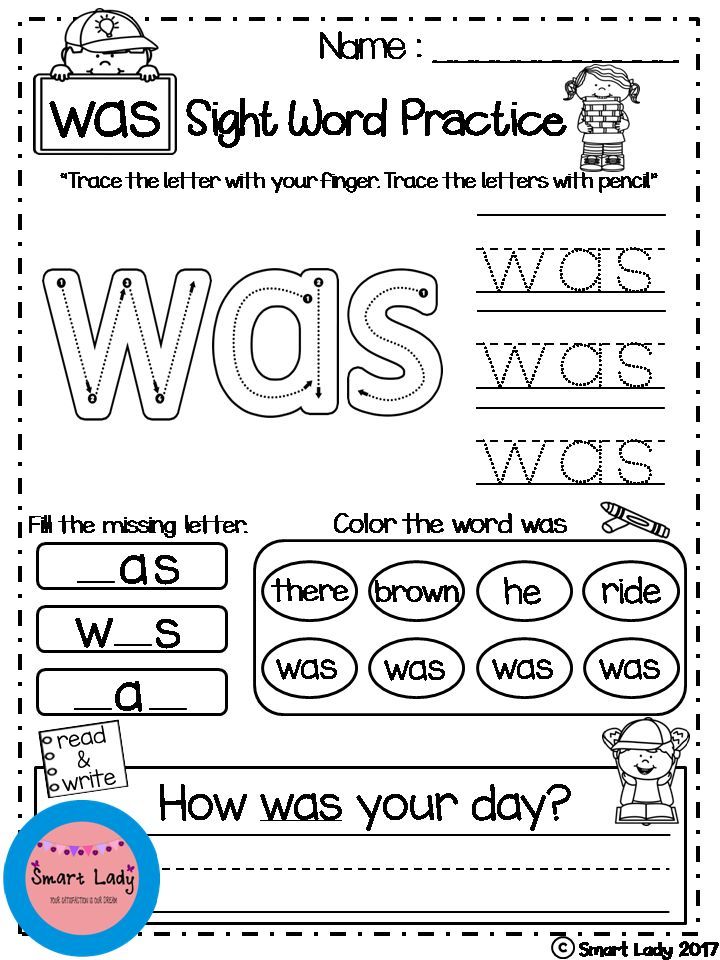
Here is what works best for my daughter:
I write the sight words that we have previously learned on a small dry erase board, which I limit to about 25 max.
Check Amazon's Price
We take some time and review those words plus add one or two new words depending on how well she does during the review.
Check out this short video of how I review the sight words with my daughter!
To ensure that she remembers the sight words we learned, I make sure to include ones that we learned in the past.
Tip#4: Make Reading Fun!
If I just focused on the above activity over and over again, I think I would struggle badly getting my kids to learn how to read.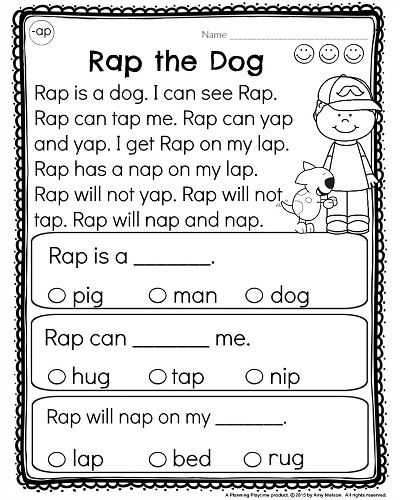
It’s essential to come up with EXCITING ways to teach your kids how to read!
Here are FOUR ways to make learning sight words engaging!
Activity #1. Shaving Cream Sight Words
Shaving cream is such an amazing sensory activity! Your kids will be so excited to use shaving cream for a learning activity, it won’t even feel like they are learning!
I use men’s foaming shaving cream because I think it works the best! But other types can be used as well.
How to do this activity:
1. Spray foam shaving cream on an art tray.
2. Spread it out so the shaving cream is all over the tray!
3. Write a sight word that you are working on in the shaving cream and ask your child if they know what it is.
4. Repeat this process over and over again! Let your child erase the words so they get a chance to play in the shaving cream!
Activity #2.
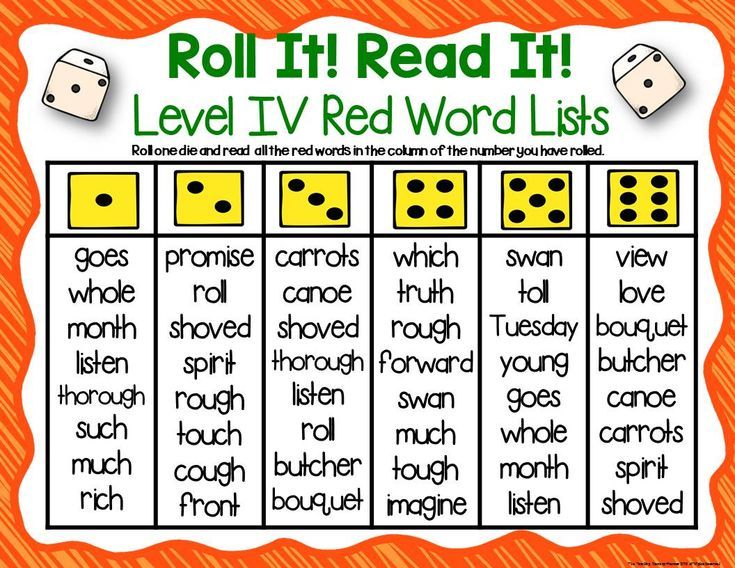 Do-A-Dot Painting Activity
Do-A-Dot Painting Activity
Do-A-Dot painters are one of my MUST-HAVE supplies to have on hand at your house.
They are so much fun to play with and they are pretty much MESS FREE! Can’t beat that right?
Do-A-Dot markers can be used for so many fun and learning activities. This specific activity was great because it worked recognizing a specific sight word while getting to paint!
GRAB YOUR FREE Pre-K Sight Word Do-A-Dot WORKSHEETS HERE!
(Each grade level coming soon!)
Check Price - Amazon
Want to check out my other MUST-HAVE Supplies? Take a look at my list HERE!
Activity#3. Play Sight Word Games
My new thing is trying to turn games into a learning activity!
My kids love to play board games, so why not add a little bit of learning into the mix while getting to play?
How to do this activity:
1.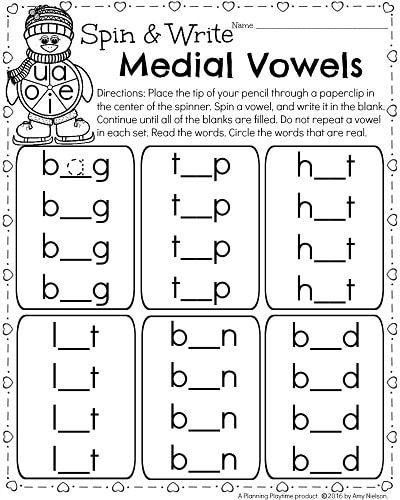 Materials you need- Don’t Break the Ice Game, dot stickers, and a marker.
Materials you need- Don’t Break the Ice Game, dot stickers, and a marker.
Check Amazon's Price
2. On white dot stickers, write some sight words that you are working on with your little one. I wrote one that my daughter already knew so she could play the game and be successful!
3. Explain to your kids that they have to tap lightly on the ice with the hammer instead of trying to hit it as hard as they can because a lot falls at once that way. Tell them they can play the regular way after you practice the sight words. 🙂
4. Ask them to find a specific word and tap on it with the hammer or they can tap on a word of their choice and tell you what it says!
5. After they say or find all the words, then you can play the normal way!
Activity #4. FUN Worksheets
My daughter loves to color, so I created this Popsicle themed Color by Sight Word Worksheet for her to do.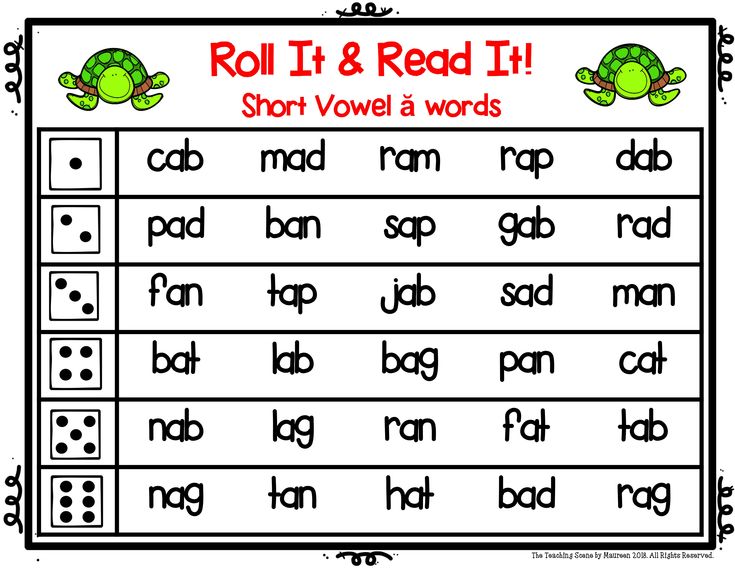
Here are some excellent workbooks available on Amazon that have activities ready to go!
- 100 Write and Learn Sight Word Practice Pages
- Wipe Clean: Learning Sight Words
- The Best Sight Word Book Ever!
Don’t want to buy an entire workbook? I am constantly working on new FREE resources to make available for you.
Click here to grab your FREE Popsicle Color by Sight Word WORKSHEET!
Also, take a look at the other FREE RESOURCES that I have while you are there!
#5. Build Sentences with Sight Words
Building sentences using sight words is a GREAT way to show your child how the specific word is used in real life.
You can do this by verbally saying sentences or you can also do it in an interactive way.
We have a bunch of Thomas the Train, train tracks at home, so I thought it would be fun to work on sentence building with sight words with them!
How to do this activity:
1.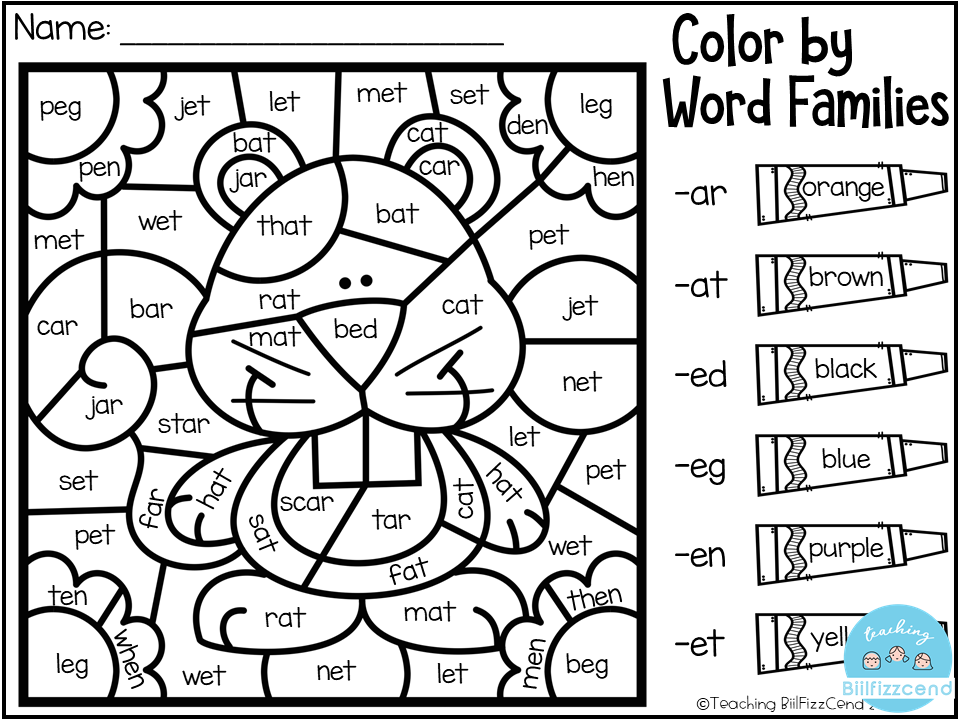 Materials you need- Thomas the Train tracks, labels, and a marker.
Materials you need- Thomas the Train tracks, labels, and a marker.
View/ Check Amazons Price
2. On labels, write some sight words that make sense in a sentence that you kids know or you want them to learn!
3. Spread them all apart so they have to work on building the sentence so it makes sense. They will have to read each word then create the sentence!
#6. Add A New Word Each Day
Once your child can recognize words, you can start introducing at least one new sight word each day. In the beginning, you want to start slow.
Since sight words are based on memorization, that’s why learning one word a day is perfect for this age level.
While you should introduce one new word a day, remember to review past sight words that you practiced with them before. It’s crucial to go over these sight words so they won’t forget them.
Remember they are still preschoolers, repetition is key!
#7.
 Stay Positive!
Stay Positive!
You never want to rush the learning process.
Forcing preschoolers to sit and complete work when they are not ready may cause the child to think negatively about learning.
You want your child to be EXCITED to learn.
Don’t get frustrated if they don’t catch on right away or if it takes them a few days to master a word. It will happen with time, and they will feel successful if you encourage them!
There are times that my daughter can just not grasp on to a word.
For example, she had trouble memorizing the word “find.” I asked her every day for TWO weeks about this word, and she still wasn’t getting it. I decided I was going to take a break and come back to it later. I introduced the word to her again after about a month, and now she has no problem with it!
As parents, we have to be patient with our children while they are learning.

We are supposed to be their biggest cheerleaders! Tell your child how proud you are when they learn a new word. They will feel your excitement and, in return, be more excited to keep on learning new material!
#8. Join An Online Learning Program
One great website that works on early reading skills is Kickstart Reading.
Kickstart Reading– This is such a fantastic reading program! I also have a promo code that you can use to get some money off of your subscription! You will receive a FOREVER plan for $39.00(normally $57.00). This is a program that focuses solely on reading, which I think is better than anything else out there. Your little ones will learn about phonetics, sight words, vowel sounds, digraphs and MORE!
PROMO CODE: ABCDEE
Here is a short demonstration of just one of the segments included on Kickstart Reading.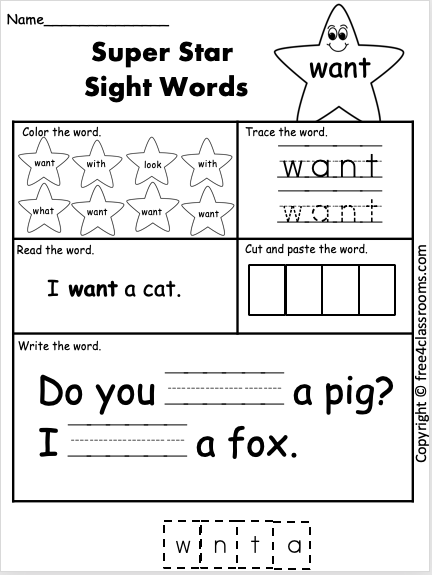 This is my 5-year-old daughter working on word blends.
This is my 5-year-old daughter working on word blends.
Final Thoughts and Conclusion
Deciding when to start your preschooler’s journey into reading is a fun but challenging adventure!
It’s important to start slow, begin with two letter sight words, and stay positive with them! Try to mix up the activities that you do with them to learn sight words to keep them engaged and excited to learn!
I would love to help you on your journey to teaching your preschooler sight words. Whether you need some creative ideas or you need more helpful suggestions, please leave a comment below.
If you have any great ideas that you would like to share as well on what helped you teach sight words to a preschooler, please share them with us!
125 interesting puzzles for children 4 and 5 years old
February 6, 2021 Likbez Adviсe
These entertaining puzzles will bring a lot of benefits.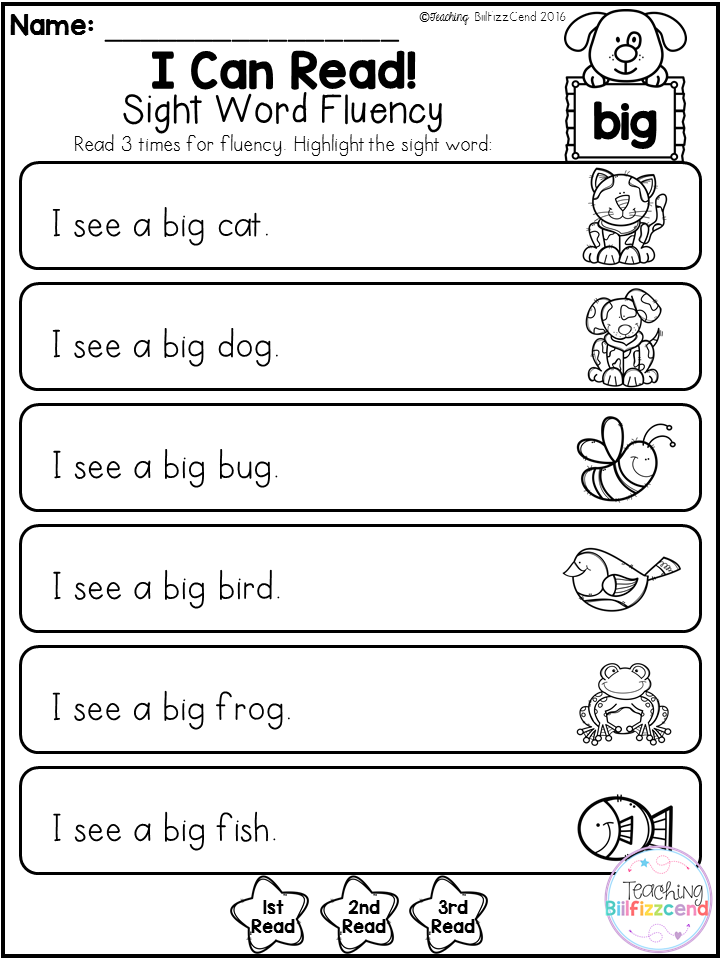
Why riddles are needed
Research proves that riddles enrich the active vocabulary of a preschooler, develop thinking, correct speech, analyzing perception, the ability to highlight the expressive features of an object or phenomenon. Not to mention the fact that figurative puzzles improve the imagination and help to take a different look at the most ordinary objects.
Riddles also help to gently educate the child and introduce him to the outside world. For example, you can ask about animals or birds in the park, and about vegetables or fruits in the store.
Riddles about pets
— 1 —
Soft paws, and scratches in the paws.
The clue
Hide the answer
— 2 —
Long ear,
Lump of down,
Jumps dexterously,
Loves carrots.
Solution
Hide answer
— 3 —
Friends, I'm not evil at all.
I'm going to someone else's house - I bark.
Asshole? Bully?
No! Ordinary…
Solution
Hide answer
— 4 —
Piglet instead of nose,
Hook instead of tail.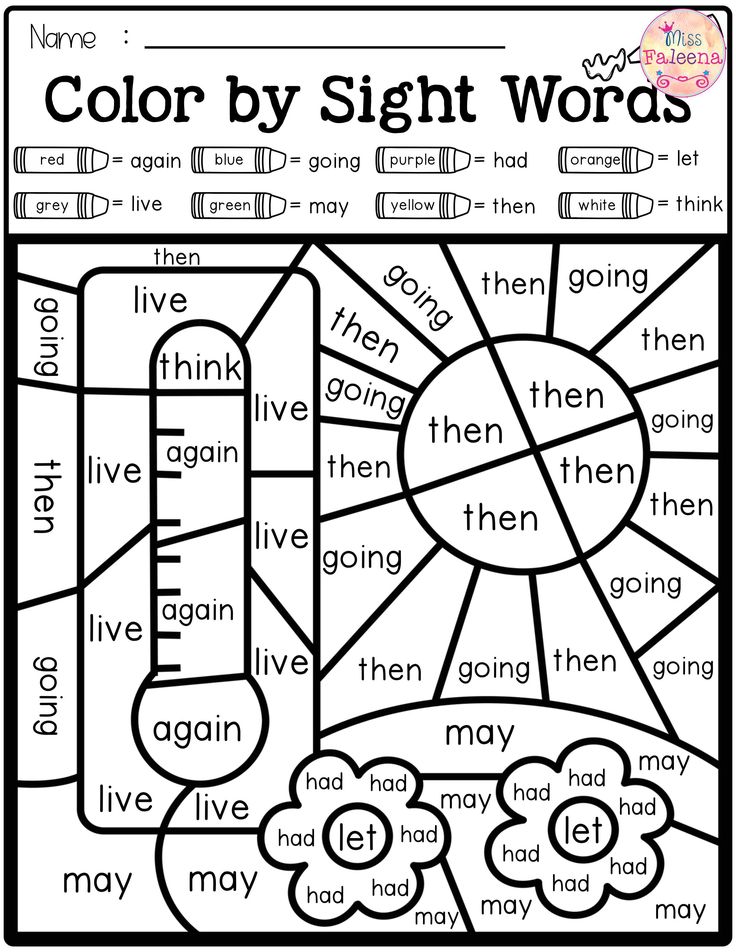
A shrill, sonorous voice,
From whom?
Solution
Hide answer
— 5 —
Curls on the horns
And rings on the sides.
He went out to eat daisies.
What is his name?
Solution
Hide answer
— 6 —
I eat very cleverly:
I have a closet with me.
All products on the cheek
I carry day and day.
Solution
Hide answer
— 7 —
Combed his hair without a comb
And washed without water,
Climbed into an easy chair
And sang in every way.
Solution
Hide answer
— 8 —
With a beard, not an old man,
With horns, not a bull,
They are milking, not a cow.
The clue
Hide the answer
- 9 -
Nose - round nose,
A perky tail - crochet.
Mom is a pig, dad is a pig.
He is their favorite son.
Solution
Hide answer
— 10 —
Not a plowman, not a carpenter,
Not a blacksmith, not a carpenter,
And the first worker in the village.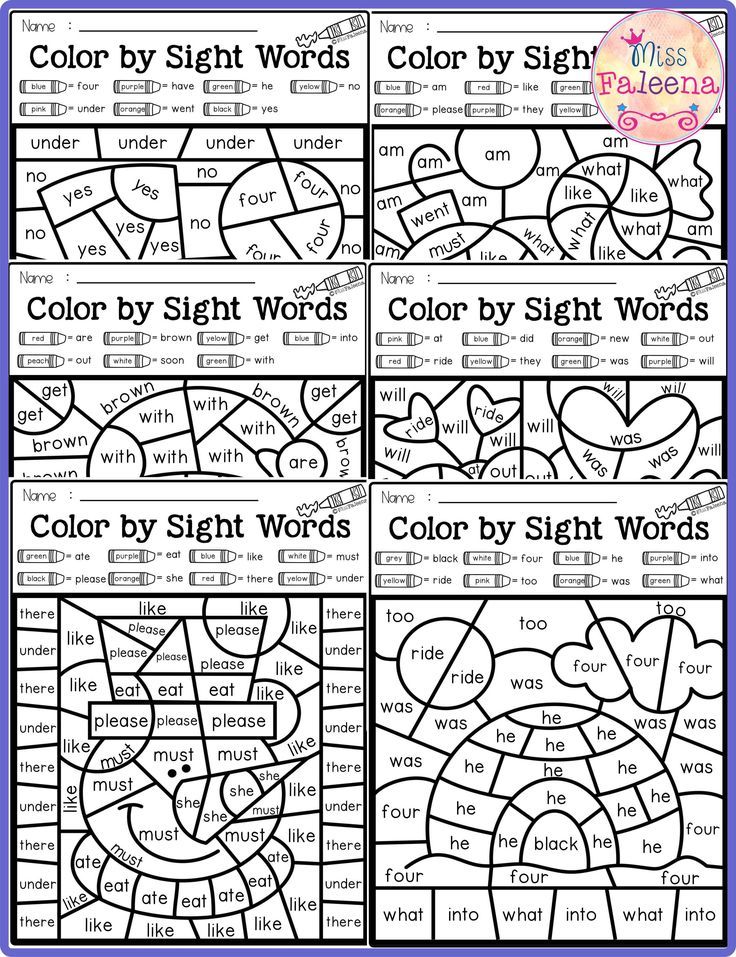
Solution
Hide answer
— 11 —
She lives in our barn,
Chews both hay and grass,
And gives milk to drink.
So who will name her for me?
The answer
Hide the answer
- 12 -
She sits on a chain,
Guards the master's house.
If someone suddenly walks,
Lets you know with loud barking.
Solution
Hide answer
Riddles about wild animals
— 1 —
Through the forest in cold autumn
He wanders gloomy and hungry.
Answer
Hide answer
— 2 —
Long-eared, with a slanting eye,
Likes to gnaw on carrots with dew,
Wears a gray coat in summer,
Wears a white coat in winter.
The answer
Hide the answer
— 3 —
He sleeps in a lair in the winter, snores quietly,
And when he wakes up - well, roar!
What is his name?
Solution
Hide answer
— 4 —
Through trees and branches
Flies and frolics,
Nimble and nimble,
But not a bird!
Solution
Hide answer
— 5 —
Lying between the Christmas trees
Pillow with needles.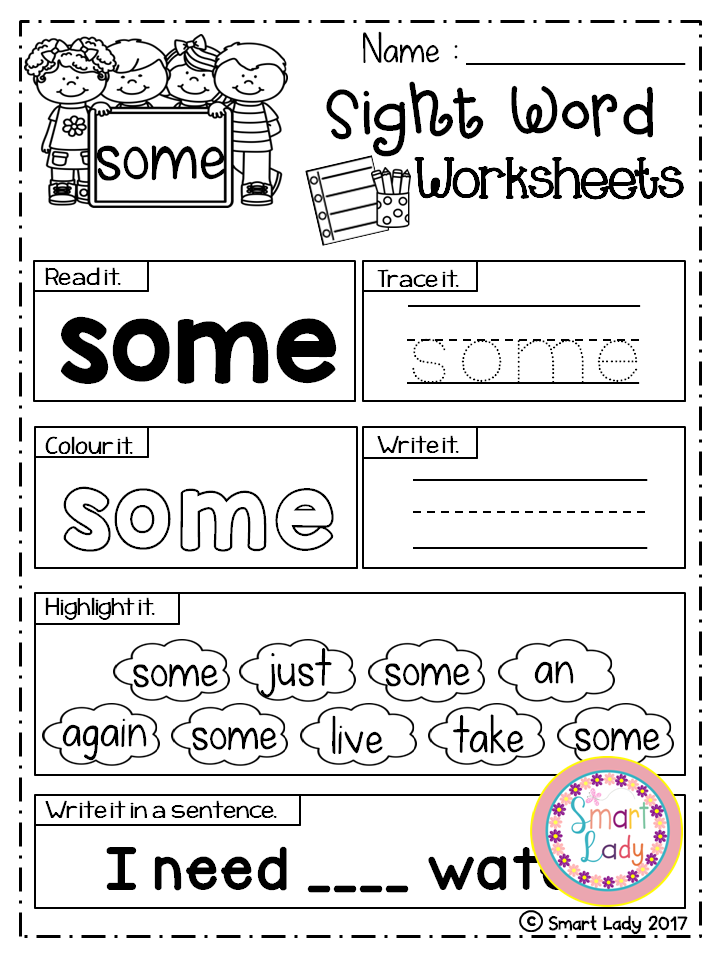
Lying quietly,
Then she suddenly ran away.
RISE
Hide the answer
-6-
somewhere in the forests
very cunning ...
RISE
Hide the answer
-7-
Little baby
is so afraid of the cat!
Her house is hidden in a mink,
And the name of the baby is ...
The answer
Hide answer
- 8 -
We'll just ask about her:
Who carries his house on himself?
Solution
Hide answer
— 9 —
She wears a fluffy fur coat
Lives in a dense forest.
In a hollow on an old tree
Nuts are chewing everything.
The answer
Hide the answer
— 10 —
Who is the most important among animals?
Brave, with a chic mane,
He is not used to hiding his anger,
He is the king of beasts, fierce ...
A clue
Hide the answer
— 11 —
Lives in a swamp in summer,
You will find her there.
Green frog
Tell me who?
Solution
Hide answer
— 12 —
Taller than a cat,
Lives in a hole in the forest.
Fluffy red tail,
We all know...
The answer
Hide answer
— 13 —
Under a huge pine tree
He sleeps in a lair in winter.
And when spring comes,
will instantly wake up from sleep.
The answer
Hide the answer
— 14 —
The ancestor of all dogs, believe me,
This gray beast of prey.
Knows a lot about sheep, goats
Terrible, cunning, fierce…
The answer
Hide answer
— 15 —
There is a lot of strength in him,
He is almost the size of a house.
He has a huge nose,
As if the nose has been growing for two hundred years.
Solution
Hide answer
— 16 —
Don't touch him with your hand!
There is a mane, but he is not a horse.
No hooves, but fangs
And claws on the paws.
The answer
Hide the answer
— 17 —
In a warm and big bag
Mom carries them with her:
Two wonderful babies
In the bag they go slowly.
The answer
Hide the answer
— 18 —
A log floats along the river,
Oh, and it's angry!
Those who fell into the river,
will bite off their nose ...
The answer
Hide answer
— 19 —
Horses put on
Marine vests.
Solution
Hide answer
Riddles about birds
Talkative bird,
The most talkative.
Solution
Hide answer
— 2 —
Right on the move
They climb into the water.
Long necks,
But not swan necks.
Answer
Hide answer
— 3 —
Scarlet scallop,
Ryabenko kaftan,
Double beard,
Important gait.
Gets up first,
Sings loudly.
The answer
Hide the answer
— 4 —
Yellow dandelions peck their seeds in the yard.
Solution
Hide answer
— 5 —
He walks importantly, very decorously.
Tail like a fan on the grass,
And a plume on the head.
Answer
Hide answer
— 6 —
Ice is all around, and these birds
are not afraid to catch a cold.
Solution
Hide answer
— 7 —
Knocking on wood,
I want to get something.
Although he disappeared under the bark -
The worm will be mine!
The solution
Hide the answer
— 8 —
An artist lives in the forest,
A famous soloist.
Perched on a bough
And sings: "Coo-coo, coo-coo."
Solution
Hide answer
— 9 —
Small bird
Has legs,
A cannot walk.
Wants to take a step,
It turns out to be a jump.
Solution
Hide answer
— 10 —
Long neck and long legs.
He can run like a horse
Run along the road.
Solution
Hide answer
Riddles about trees and grass
— 1 —
What kind of girl is this:
Not a seamstress, not a craftswoman,
She doesn’t sew anything herself,
She wears needles all year round.
The clue
Hide the answer
— 2 —
This smooth box
Bronze color
Hidden a small oak tree
Next summer.
The answer
Hide the answer
— 3 —
In spring and summer
We saw him dressed,
And in the autumn all the shirts were torn off the poor thing.
The answer
Hide the answer
— 4 —
I dropped my curls into the river
And I felt sad about something.
What is she sad about,
Doesn't tell anyone.
The solution
Hide the answer
— 5 —
Breaks through in April,
All the fields have turned green!
Covers like a carpet
Field, meadow and even yard!
Solution
Hide answer
— 6 —
Sticky buds,
Green leaves.
With white bark
Standing under the mountain.
The answer
Hide the answer
— 7 —
Small and plain
And modestly green,
But in autumn their leaves
And the berries turn red.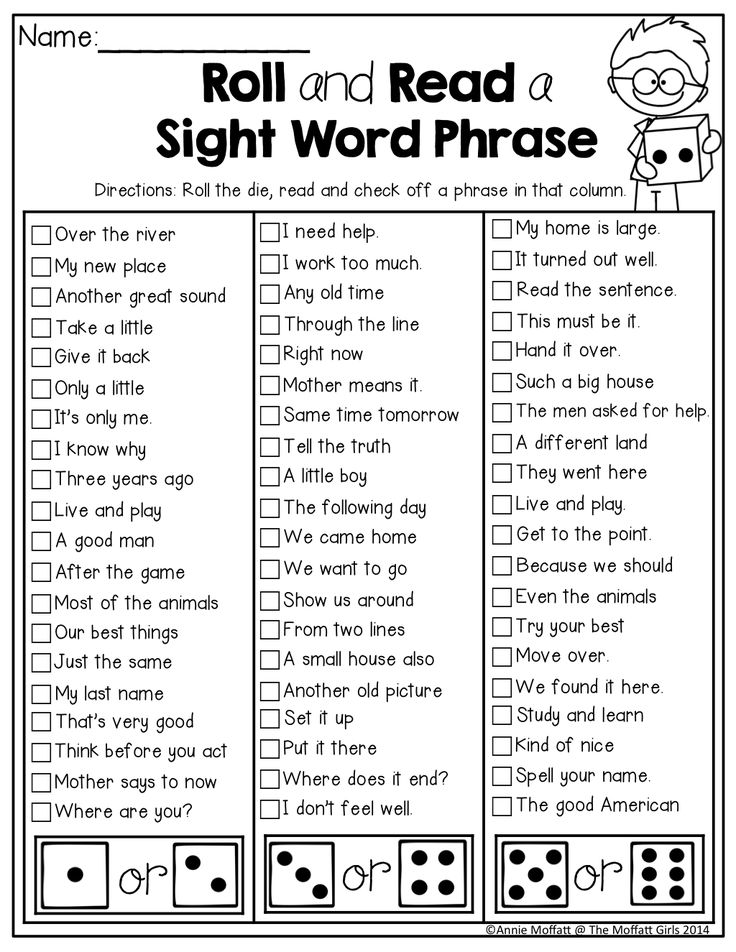
Solution
Hide answer
— 8 —
White sheep run over the candle.
Solution
Hide answer
- 9 -
No one scares, but everyone trembles.
Solution
Hide answer
— 10 —
Either from the roof, or from the sky,
Either cotton wool or down.
Or maybe snow flakes
Appeared in the summer all of a sudden?
Who is stealthily pouring them out
, as if from a sack?
A clue
Hide the answer
— 11 —
Russian beauty
Standing in a clearing
In a green blouse,
In a white sundress.
Solution
Hide answer
— 12 —
You can always find her in the forest,
Let's go for a walk and meet her.
It is prickly, like a hedgehog,
In winter in a summer dress.
The answer
Hide the answer
Riddles about natural phenomena
- 1 -
Well, which of you will answer:
Not a fire, but burning painfully,
Not a lantern, but shining brightly,
And not a baker, but baking?
The answer
Hide the answer
— 2 —
Though she herself is both snow and ice,
And she leaves - tears are shed.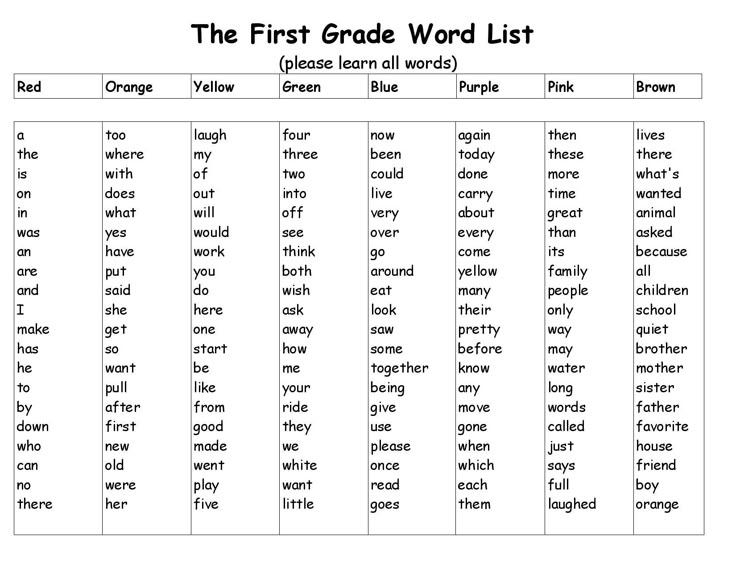
Solution
Hide answer
— 3 —
Came without paints and without a brush
And repainted all the leaves.
Solution
Hide answer
— 4 —
In the south it is both dark and black.
In the north, she is white.
Solution
Hide answer
— 5 —
Without arms, without legs,
And he opens the gate.
Solution
Hide answer
— 6 —
An unprecedented bridge arched over the field.
But you can't reach the stars on the bridge.
The answer
Hide the answer
— 7 —
It melts in the sun, what a shame!
Was just in the sky, but now it's not visible.
Solution
Hide answer
- 8 -
The guest was visiting,
The bridge was paved on the river.
Without nails and axe,
Without hammer and chisel.
Solution
Hide answer
— 9 —
White cotton wool
Floats somewhere.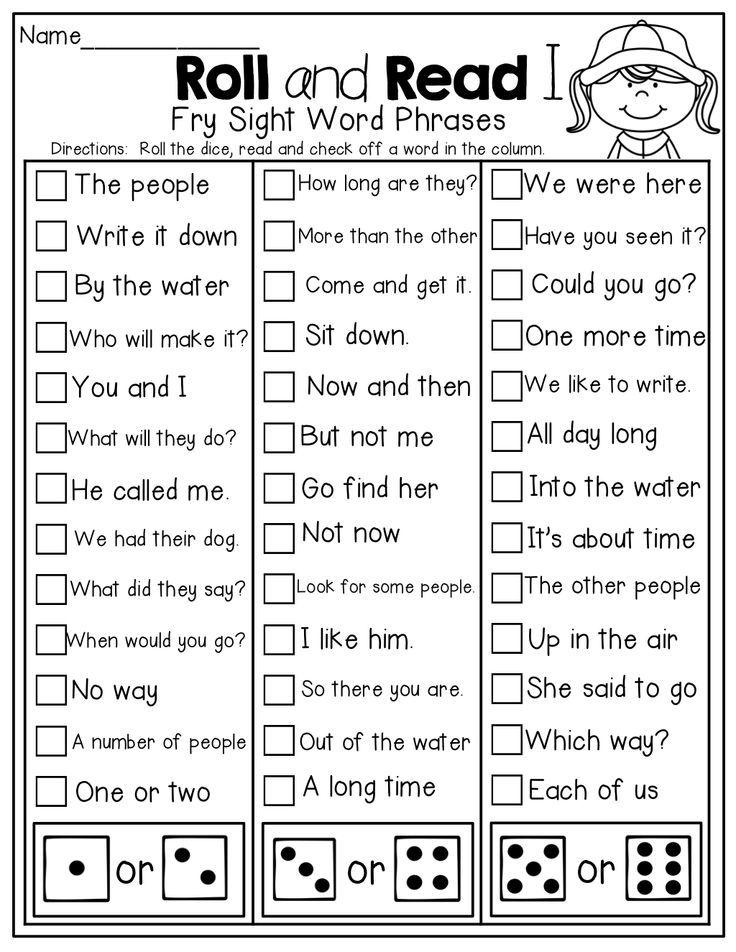
The closer the rain -
The lower the wool.
The solution
Hide the answer
— 10 —
A swallow has flown in,
Has spread its feathers.
The sun warms gently,
What time is this?
Solution
Hide answer
— 11 —
The sun is baking, the linden blossoms,
The rye ripens, when does it happen?
The answer
Hide the answer
— 12 —
There is a terrible thunder in the sky,
He tells everyone to run home!
A goat runs to hide,
It starts…
The solution
Hide the answer
— 13 —
Drops of moisture on the leaves,
On the grass and on the flowers.
What are these miracles?
Glitters on the grass…
Solution
Hide answer
— 14 —
Clouds blocked the sun,
Suddenly, thunderous thunder was heard.
The drops sounded together,
Nature needs it very much.
Solution
Hide answer
— 15 —
In the blue sky, like on a river,
White sheep swim.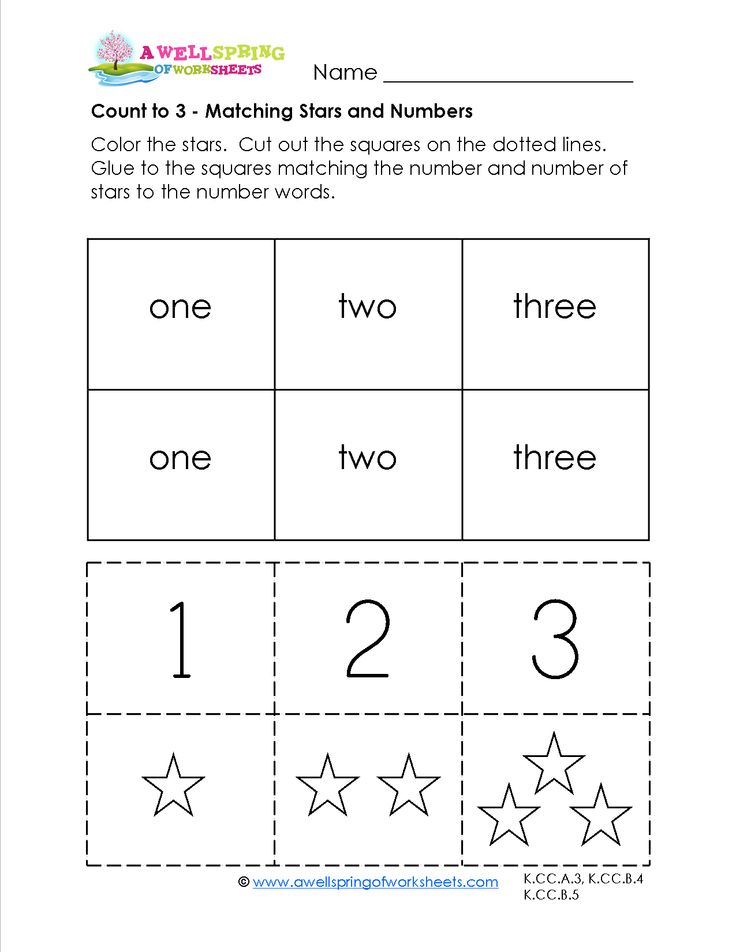
They keep their way from afar,
And they are called ...
Solution
Hide answer
- 16 -
Various fish live in it,
Everyone calls it ...
Solution
Hide answer
Riddles about the house and everyday objects
— 1 —
Whoever enters the house will take me by the hand.
Solution
Hide answer
— 2 —
Mouth full of teeth, but not eating.
The answer
Hide answer
— 3 —
I only keep walking, and if I get up, I will fall.
Solution
Hide answer
— 4 —
He is light and thin, but with a heavy head.
Solution
Hide answer
— 5 —
On a clear day I stand in a corner, on a rainy day I go for a walk.
The answer
Hide the answer
— 6 —
All neighbors
Live side by side,
A can’t see each other.
Solution
Hide answer
— 7 —
Steel horse, linen tail.
The solution
Hide the answer
- 8 -
They go, they go, but they will not leave the place.
Solution
Hide answer
— 9 —
Sheet of paper in the morning
We bring it to the apartment.
On one such sheet
Lots of different news!
Solution
Hide answer
— 10 —
Small, round,
You can’t catch it by the tail.
Solution
Hide answer
Riddles about vegetables
— 1 —
I did not blush bashfully — children, I just matured.
Solution
Hide answer
— 2 —
Everything is edible for me — both the top and the spine.
Even if you cried, I'm still your friend.
Solution
Hide answer
— 3 —
The green house is cramped:
Narrow, long, smooth.
Sitting side by side in the house
Round guys.
Trouble came in the autumn -
The smooth house cracked,
They galloped in all directions
Round guys.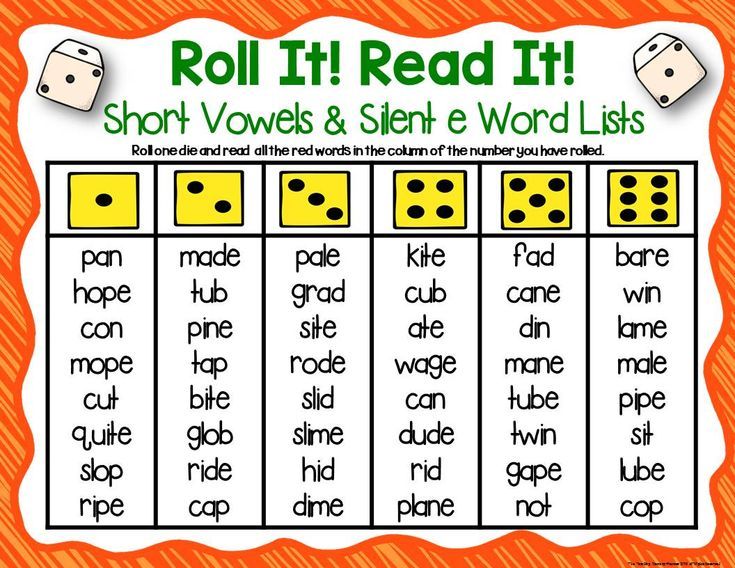
Solution
Hide answer
— 4 —
I was born to glory,
The head is white, curly.
Who loves cabbage soup -
Look for me in them.
Solution
Hide answer
— 5 —
It happens, children, different —
Yellow, herbal and red.
Now he is hot, now he is sweet,
You need to know his habits.
And in the kitchen - the head of spices!
Guessed? This is…
Solution
Hide answer
— 6 —
Green in the garden, salty in the jar.
Solution
Hide answer
— 7 —
She is in a brown uniform,
There is no richer vegetable in the world.
In the garden, her bush blooms,
Under it, in the ground, she grows.
Solution
Hide answer
— 8 —
Grass above ground,
Burgundy head underground.
Clue
Hide answer
— 9 —
Round, not moon,
Yellow, not butter,
Sweet, not sugar,
Tailed, not mouse.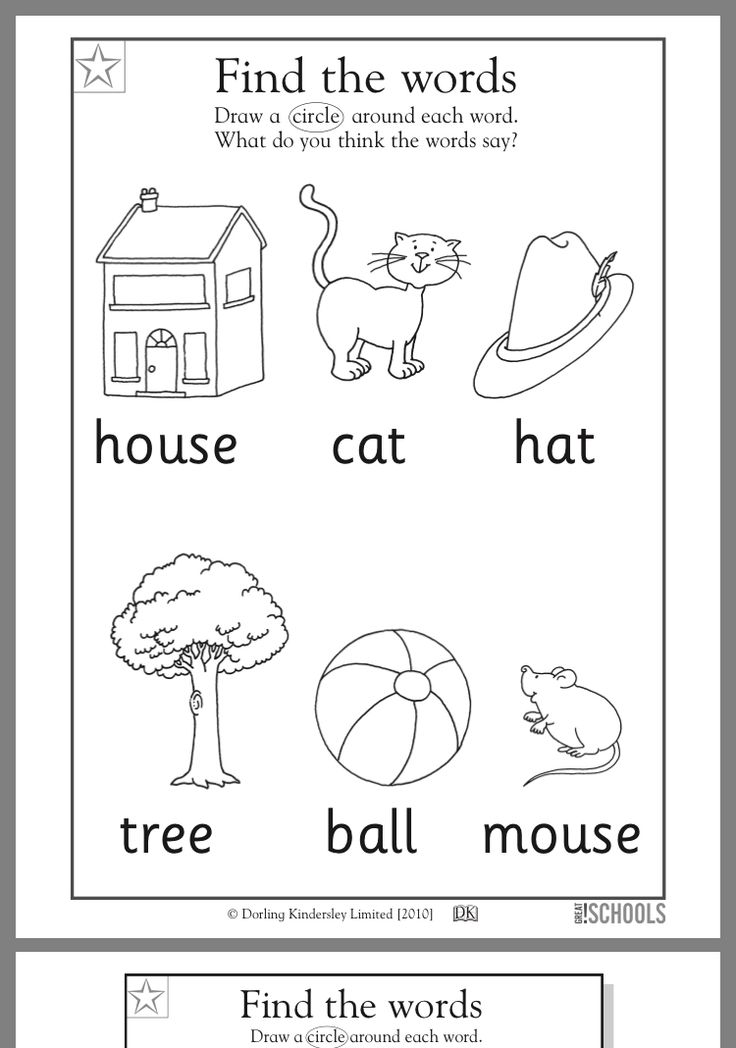
Solution
Hide answer
— 10 —
Pink cheeks, white nose,
I sit in the dark all day long.
And the shirt is green,
She is all in the sun.
Solution
Hide answer
— 11 —
Both green and thick
A bush has grown in the garden.
They began to pinch -
They began to cry and sob.
Solution
Hide answer
Riddles about fruits and berries0025 Guys will be glad to me - I'm delicious to the glory!
The answer
Hide the answer
— 2 —
Samo with a fist, red barrel,
If you touch it, it’s smooth, if you bite it, it’s sweet.
Answer
Hide answer
— 3 —
Kids know this fruit,
Monkeys love to eat it.
It comes from hot countries,
It grows in the tropics…
The answer
Hide answer
— 4 —
What kind of fruit has ripened in the garden?
Bone inside, freckled cheeks.
A swarm of wasps flew to him -
Sweet soft.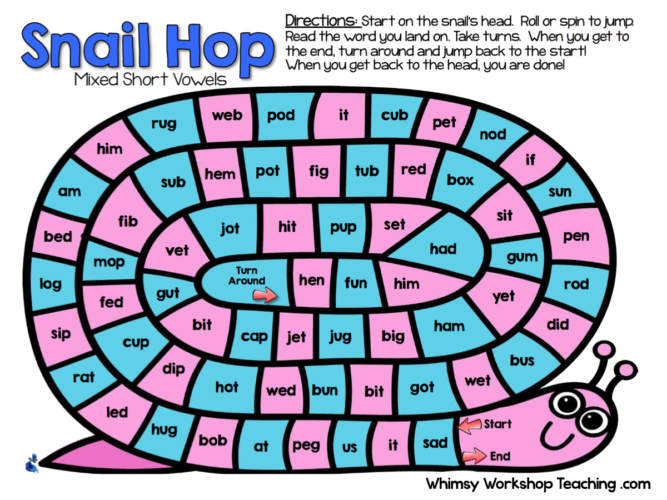 ..
..
Solution
Hide answer
— 6 —
He grew up in the south,
Gathered his fruits in a bunch.
And in the harsh winter
Will come to our home with raisins.
Solution
Hide answer
— 7 —
This fruit is sweet,
Both round and smooth.
Inside it is fragrant,
Outside it is fluffy.
Solution
Hide answer
— 8 —
Yellow citrus fruit
It grows in sunny countries.
But it tastes sourest,
And his name is ...
The answer
Hide answer
— 9 —
Balls hanging on knots,
Turned blue from the heat.
Solution
Hide answer
— 10 —
The yellow ball is slightly bitter.
Quench your thirst in summer.
Solution
Hide answer
Riddles about other food
— 1 —
We will spread it on bread
And add it to various cereals.
They won't spoil the porridge for sure
These yellow pieces.
The answer
Hide the answer
- 2 -
The bees worked hard in the summer,
So that we could treat ourselves in the winter.
Open your mouth wide,
Eat fragrant sweet ...
The answer
Hide the answer
— 3 —
Sugar shirt,
Above is a bright piece of paper.
Sweet tooth loves it.
What kind of treat?
Solution
Hide answer
— 4 —
It is made of milk,
But its sides are hard.
There are so many different holes in it.
Guessed? This is…
The answer
Hide answer
— 5 —
Wooden leg,
Chocolate clothes.
I melt in the sun,
I disappear in my mouth.
Solution
Hide answer
— 6 —
He jumped off the pan,
Browned in the middle.
To know, another one is ready
Thin from the heat…
Solution
Hide answer
— 7 —
And he’s an ear, and a broth,
Shchi, a pickle is also he.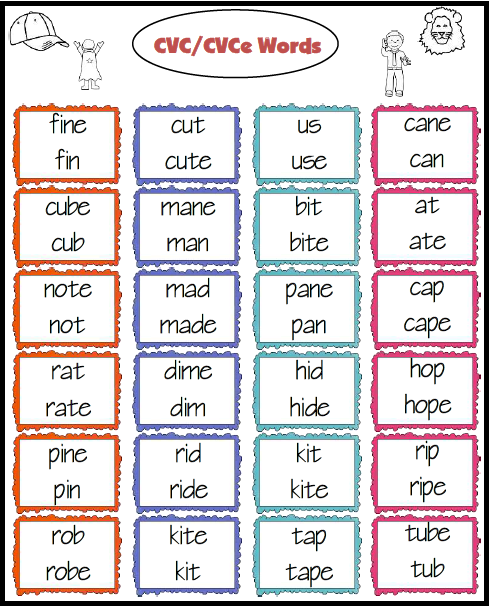
It is pea, cabbage
And, of course, very tasty.
Solution
Hide answer
— 8 —
In a piece of pastry
There was a place for the filling.
Inside it is never empty,
There is often meat and cabbage.
Solution
Hide answer
— 9 —
I grew up in the field as a spikelet,
I lie on the table in a piece.
The answer
Hide the answer
— 10 —
Sweet, gentle and airy.
Sometimes we all need it.
Not a single celebration
passes without it.
Solution
Hide answer
Riddles about everything with a trick
— 1 —
Round head,
Letter of the same shape…
Answer
Hide answer
— 2 —
The bunny went out for a walk,
The paws of the hare exactly ...
Answer
Hide the answer
Feet at the bird at exactly ...
Rage
Hide the answer
- 4 -
The teacher Ira said,
that two more than . ..
..
RIGHT
Hide answer
- 5 -
with each day closer ,
Soon we will all get up on ...
Rage
Hide the answer
- 6 -
Hide Irinka and Oksanka
Three -wheeled is ...
Rage
Hide answer
- 7 -
to vaccinations and injections of
Mom of children are led to ...
Load
Hide answer
- 8 -
He is a reliable guard,
The door cannot be without ...0003
Rage
Hide answer
- 10 -
My sisters small
bought by summer ...
RISE
Hide answer
- 11 -
We will take the flowers okhop
and weave now ...
slide
222 Hide answer
— 12 —
Hockey players crying,
The goalkeeper missed them ...
The answer
Hide answer
— 13 —
Knoistanka and hitch,
And the name of it ...
RISE
Hide the answer
- 14 -
and in Voronezh and in Tula
children sleep at at night .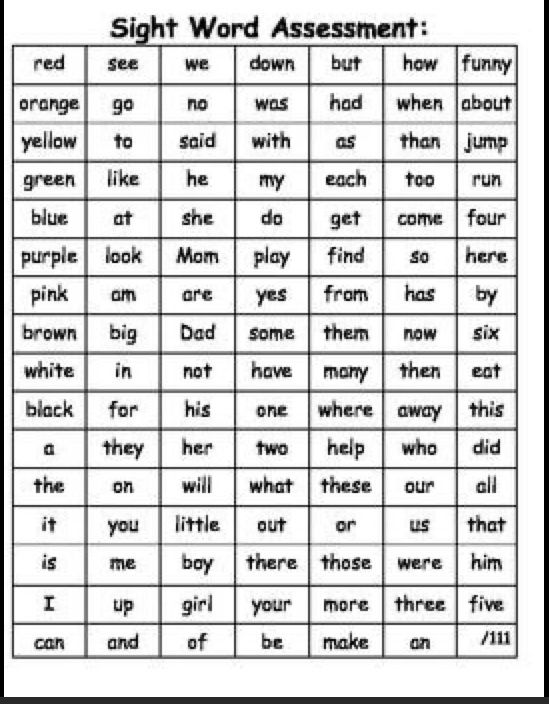 ..
..
Rage
Hide answer
- 15 -
You will sleep during the lessons -
For the answer you will get ...
The solution
Hide answer
Read also 👦👪🎊
- 10 tasks for logic and intelligence1305
- 15 Tricky Riddles to Practice Outside the Box
- 20 Cool Outdoor Games for the Whole Family
- 27 ways to keep your child busy
- 24 great books for kids if The Little Prince is already boring
9 basic intellectual skills to develop in children
What is a "smart person"? This is a very broad concept. These are people who can immediately remember a lot of facts - they win a lot of money in quizzes. A smart scientist like Marie Curie who tinkers in her lab, makes a brilliant discovery, and wins not one but two Nobel Prizes. Here is another stereotype of an intellectual - a grandmaster who thinks about the board before making an unexpected move and winning. Moreover, he can beat several opponents at once, and do it very quickly.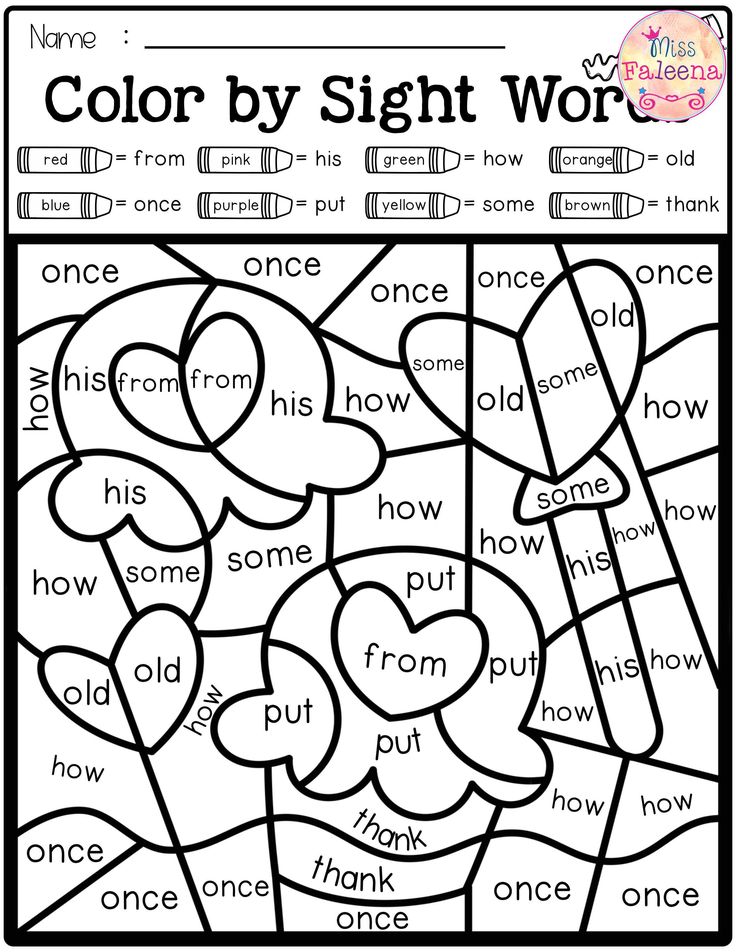
All of these images illustrate one or more aspects of what we call the mind. Simply put, the mind is knowledge and a good memory, the ability to apply knowledge in unique situations and to solve problems and do it quickly and accurately, as well as creativity.
Psychiatrist Steven Camarata in his book "Parenting Without Patterns: Learn to Listen to Your Child" identifies 9 basic intellectual abilities of the child and gives advice on how to develop these abilities.
- Problem solving requires: 1) reasoning, 2) visual spatial thinking, and 3) sound information processing.
- Stocks of acquired knowledge imply the ability to access information stored in memory. This requires: 4) retrieval of information from long-term memory, 5) word comprehension (recognition of language, including its vocabulary), 6) reading and writing, and 7) mathematical skills.
- Cognitive efficiency includes: 8) short-term memory and 9) information processing speed.
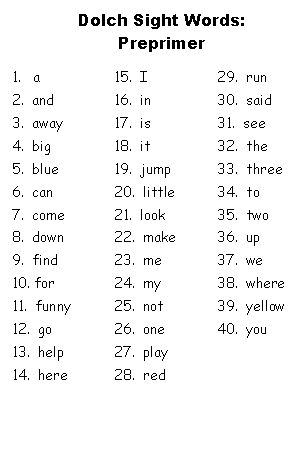
1. Problem solving (thinking skills)
Fluid reasoning
In short, fluid reasoning is the ability to solve problems. This is thinking about a sequence of numbers, making predictions, playing chess, analyzing the results of experiments. When Einstein was working on the theory of relativity, he used fluid reasoning to understand the relationship between mass and energy. He then explained these relationships in the compact formula E = mc2.
Children should learn by trial and error and receive appropriate feedback. It is important that parents encourage an innovative approach to problem solving. Tell your child more often: “Try it differently”, “What do you think, why did this happen?” and "What are you going to do next?" Play games that require your child to think and decide what the next step will be. Younger children can line up blocks, alternating large, medium, and small, or red, blue, and yellow, and let them place the next one. With older children, you can play with numbers (even / odd, multiples, etc. ). And if you read a story to them, ask: what, in their opinion, will happen next, on the next page. If the answer is wrong, do not correct the child. First ask: “What else can happen?”.
). And if you read a story to them, ask: what, in their opinion, will happen next, on the next page. If the answer is wrong, do not correct the child. First ask: “What else can happen?”.
Visual spatial thinking
Fluid reasoning and problem solving in the visual realm is called visual spatial thinking. The ability to keep a geometric figure in mind and mentally rotate it is a form of visual spatial thinking. It also includes the ability to identify an object from an incomplete drawing or draw a path to the exit on the labyrinth diagram.
The simplest thing that parents can do to develop visual spatial thinking from the first days of a child's life is to drive some object in the infant's field of vision, stop and shake it in the same place, and then continue moving. Such manipulations will teach the baby to anticipate when the object will stop and shake.
Puzzles, building blocks, a toy railroad, mazes, find books, art supplies such as clay, plasticine, and plaster are all materials that can facilitate the development of visual spatial thinking.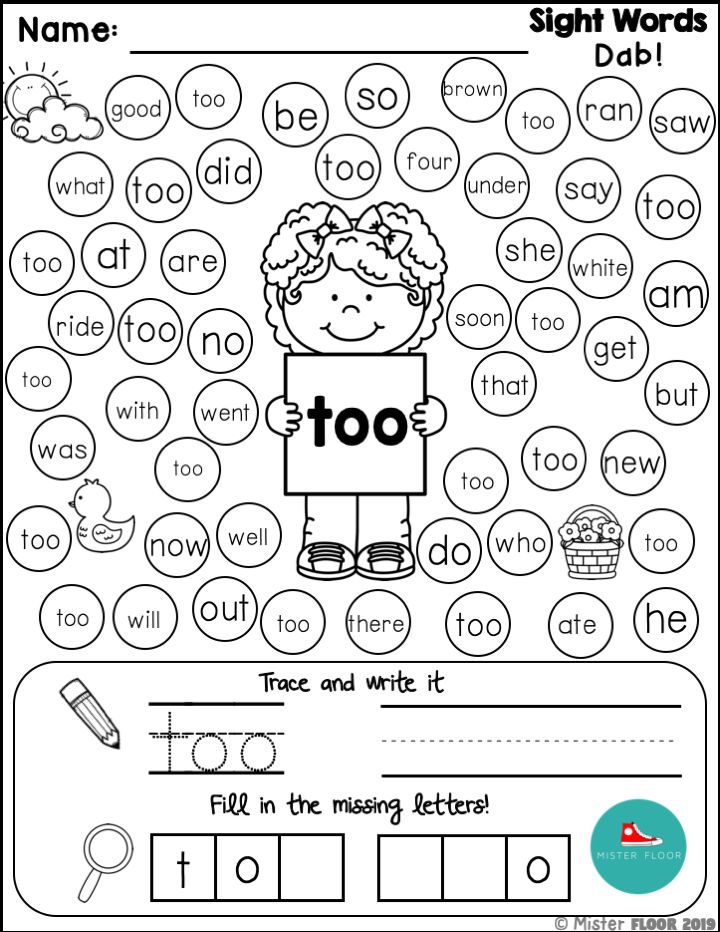 It is important that parents interact with their children during playtime and ask what they think.
It is important that parents interact with their children during playtime and ask what they think.
Auditory Information Processing
In languages with a phonetic alphabet, where the letters represent the sounds of the language (e.g. Spanish, Italian, Russian, etc.), reading aloud requires visual identification of the letters, but hearing what is written requires auditory processing.
Your child's most important source of auditory information is your voice. Hold your baby at a distance of thirty centimeters from your face and talk to him or sing, changing intonation. A child may not understand words, but they are very important for the development of his ability to process speech information.
For older children, music, singing, nursery rhymes are suitable for developing the processing of sound information. And also games in which you need to set the right rhythm by clapping your hands, or games like "Snowball", where parents and the child take turns saying longer and longer sentences (as in the poem "The House That Jack Built"), or games with rhyme.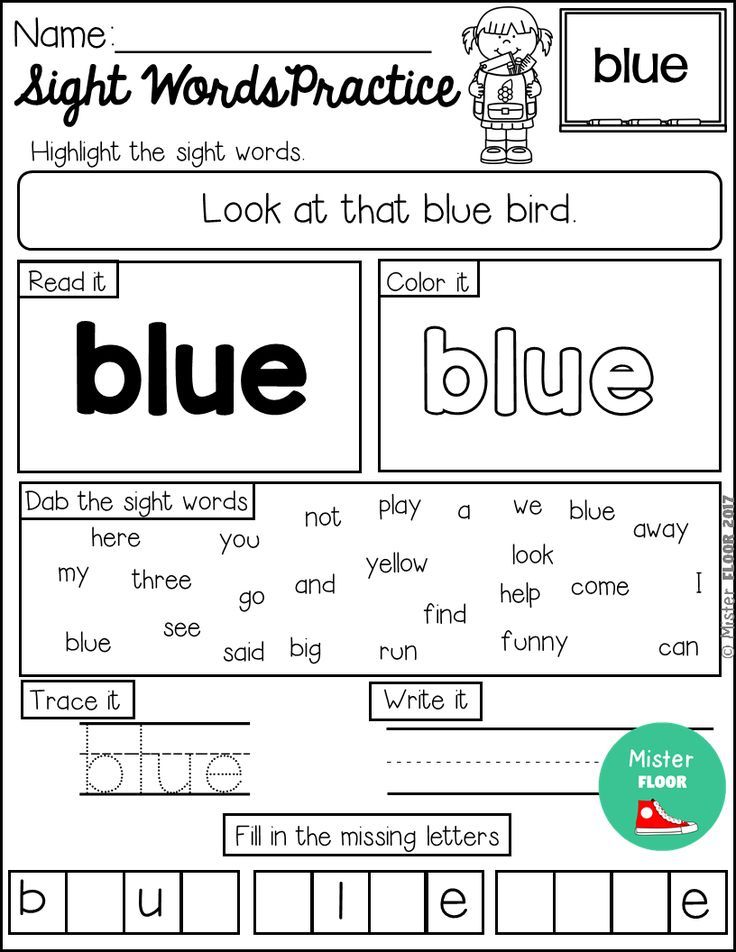 Listening and retelling stories is also very helpful.
Listening and retelling stories is also very helpful.
2. Stores of acquired knowledge
Retrieving information from long-term memory
The brain does not work as a recorder in which information is stored verbatim. It is stored in fragments, and then assembled into a single whole in order to restore events. Long-term memory retrieval refers to the ability to retain knowledge and then recall it as needed.
Parents who understand that developing long-term memory is about more than memorizing dry details and boring facts can facilitate its development by associating information with engaging stories. Information is unlikely to get into a child's long-term memory if he gains knowledge while watching an educational DVD. Memory develops much better if a small child becomes an active participant in the learning process - an actor on stage, and not a spectator in the hall. Get into the habit of walking, telling stories, asking the child to remember what happened - this will also help develop his memory.
Word comprehension
A high degree of comprehension is when a person identifies relationships between words. For example, he names generalizing words (“animal” is a generalizing word for “pig”, “cow”, “dog”, etc.) or words with similar (synonyms) and opposite (antonyms) meanings.
As in the case of long-term memory, children remember words during some life experience. It is necessary that the child plays with objects, moves them, and at this time the parents talk about these objects and actions with them. Therefore, during a trip to the zoo, the child will learn more new words than when he looks at pictures of animals on a computer screen.
Young children learn new words when they read books with their parents. If the book has interesting illustrations, this is a very good way to expand vocabulary. When a child begins to read independently, this activity will be a great way to learn new words, because if you put a word in context, it is remembered better.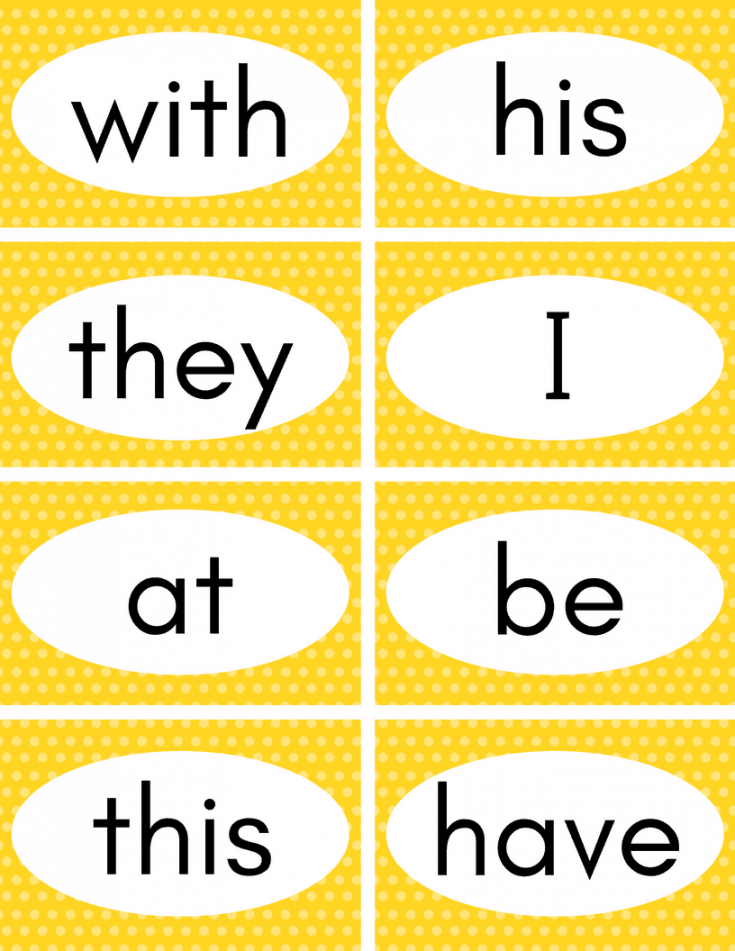
When a child is three years old, and sometimes even two, parents can expand his vocabulary by talking about word classes. For example, animal figurines can be divided into zoo animals, farm animals, and pets.
Parents need to be aware of the difference between vocabulary and grammar. Vocabulary and grammar are developed and acquired in completely different ways. Grammar is the rules for composing phrases and sentences from words (syntax) and changing the forms of words (morphology). This distinction is important from a learning perspective: Noam Chomsky, Steven Pinker, James Morgan, Gene Berko-Gleason, and other cognitive scientists have shown that learning rules for constructing sentences and word forms is not memorization but an inductive process.
Reading and writing
In the last ten years, parents have been trying to teach their children to read earlier and earlier. Such parents are actively advertised training programs. There is a serious discussion about what aspects of reading an infant can learn if he does not yet know words on which visual symbols can be superimposed.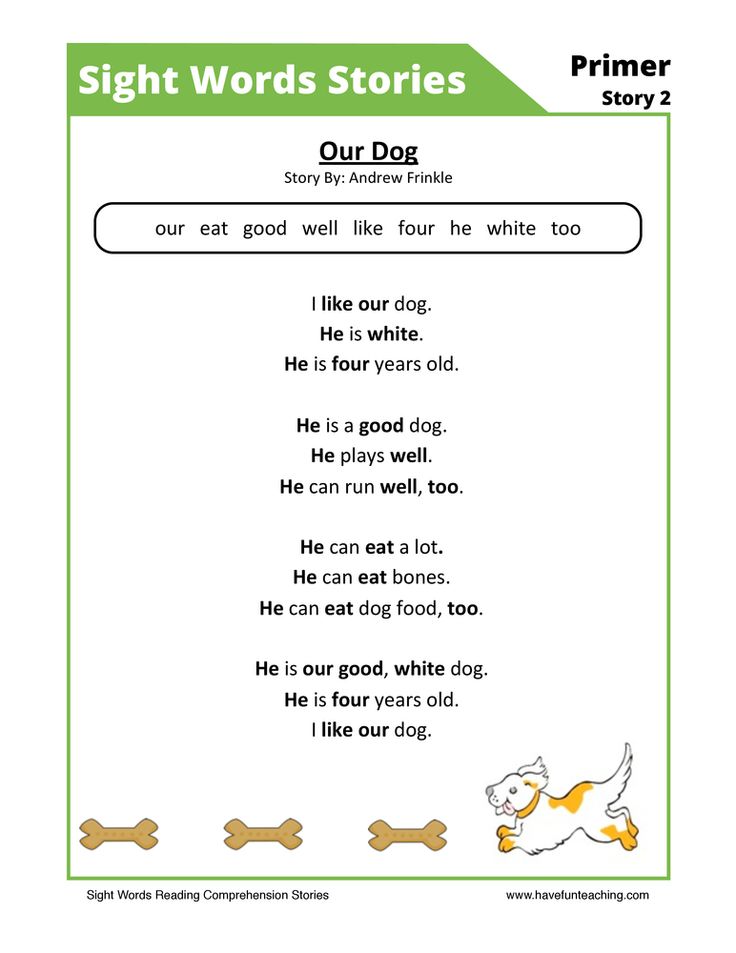
The phenomenon when a child can read without understanding the meaning of words is called hyperlexia. Steven Kamarat gives an example from his practice: a four-year-old boy could read almost any word, but could not choose objects that indicated the words he had just read.
Teaching children to read is not just about learning the sounds that letters represent. You need to make sure that children understand the meaning of the words they read. It should also be noted that countries where children are not usually taught to read before the age of seven or even eight have higher literacy rates. For example, in Finland, which occupies a leading position in terms of student achievement. But in this country, children learn to read late. Surely the reason is that the level of language proficiency in seven-eight-year-old children is much higher than that of three-four-year-olds. The older the child, the more words can be stored in his long-term memory.
This does not mean that reading should be avoided until the child starts school.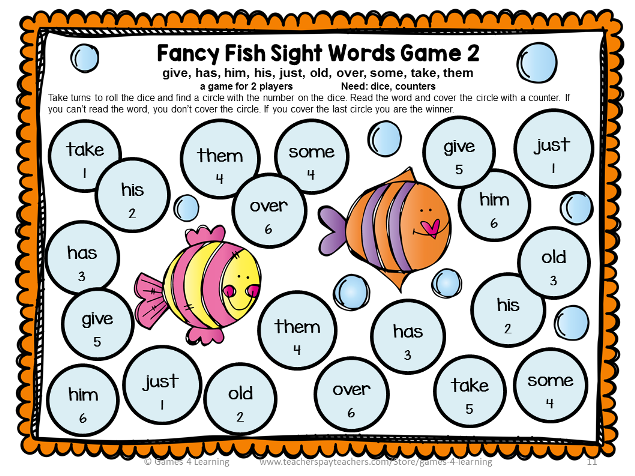 The love of reading is laid in early childhood during joint reading with parents. Children should read aloud as often as possible. Choose captivating stories and books with lots of big, beautiful pictures and little text. Do not just read the words, but also ask the child to come up with a story with them.
The love of reading is laid in early childhood during joint reading with parents. Children should read aloud as often as possible. Choose captivating stories and books with lots of big, beautiful pictures and little text. Do not just read the words, but also ask the child to come up with a story with them.
Mathematics
In order to solve problems, it is not necessary to have mathematical knowledge. Rather, you need knowledge of numbers and the ability to perform simple mathematical operations - for example, addition and subtraction. But the main goal is to develop in children an intuitive sense of quantity, so that numbers “make sense” to them, as in the case of reading. It is important to make sure that the child understands the quantities that the numbers represent.
The smallest can be given one item and counted. For example, your child loves green peas. You give him one pea at a time and say: “One pea. You have one" - "Here's another one. Now you have two peas" - "Here's another one - three in total" - etc. And back: “Five peas, one is missing, you ate it. There are four left" - "Now there are three left" - "You ate everything - five, four, three, two, one, zero. No more".
And back: “Five peas, one is missing, you ate it. There are four left" - "Now there are three left" - "You ate everything - five, four, three, two, one, zero. No more".
When a child grows up, concepts such as fractions can be explained to him using the example of cookies: "There was a whole, we broke it into two parts, and you ate half." "And here's another whole, let's break it into four parts - now you've eaten a quarter," etc.
3. Cognitive efficiency
Short-term memory
Short-term memory is the ability to keep in mind a small amount of recently acquired information and use it. In a short-term memory test, the sentence "I went to the store" is asked to be repeated with changes, for example: "I went to the store." To say this, you need to keep separate words in your head and change their order in the sentence. This requires short-term memory.
When children start talking, it becomes noticeable how their short-term memory works. Many of them repeat syllables but change their sequence or add new elements: that is, these elements are stored in short-term memory and retrieved from it.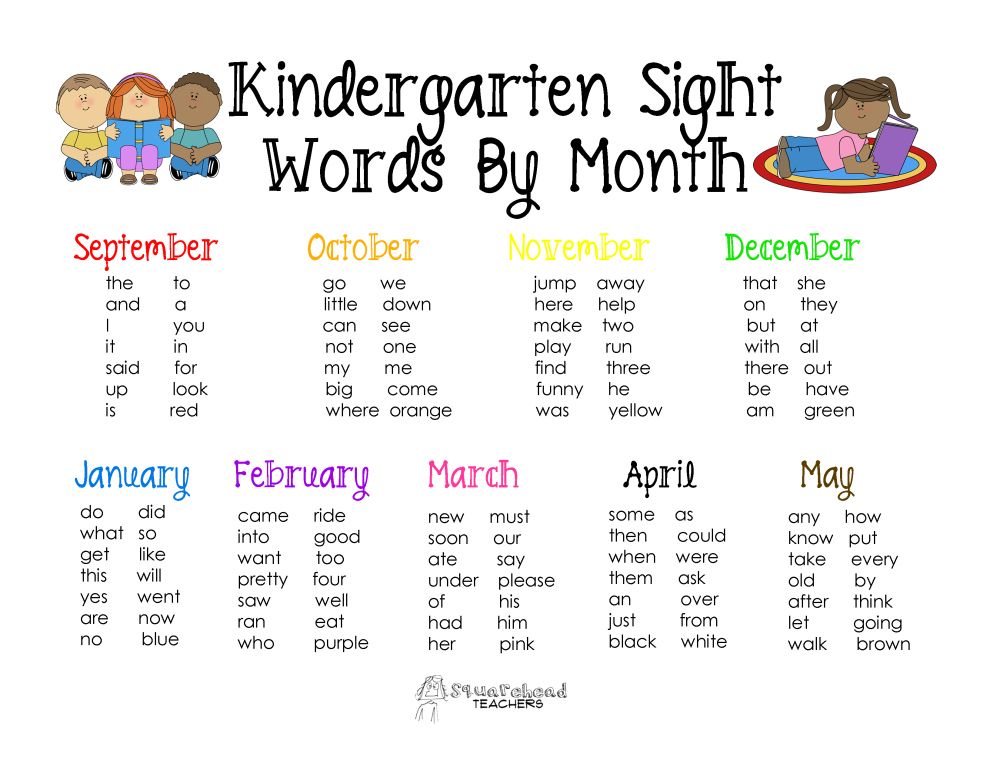 When a child does not automatically repeat phrases, but changes them a little, this is a good sign - a sign that he "breaks" phrases into a chain of words and processes them.
When a child does not automatically repeat phrases, but changes them a little, this is a good sign - a sign that he "breaks" phrases into a chain of words and processes them.
Processing speed
Processing speed is the ability to quickly and accurately perform mental tasks of moderate difficulty. In two minutes, a three-year-old child can look at an average of five items and make a simple decision in relation to them (for example, separate triangles and squares), and a four-year-old can manage an average of fifteen. But if a child trains with pictures, as described above, and achieves impressive results, then this will not increase the speed when performing other tasks.
Parents shouldn't get into all the details of the debate about whether (and if so, what's good) the cognitive clock can be accelerated. The main thing is to develop the child's ability to think with the help of the game.
For example, find in a picture where many objects are shown, one specific one, or name five words starting with "b".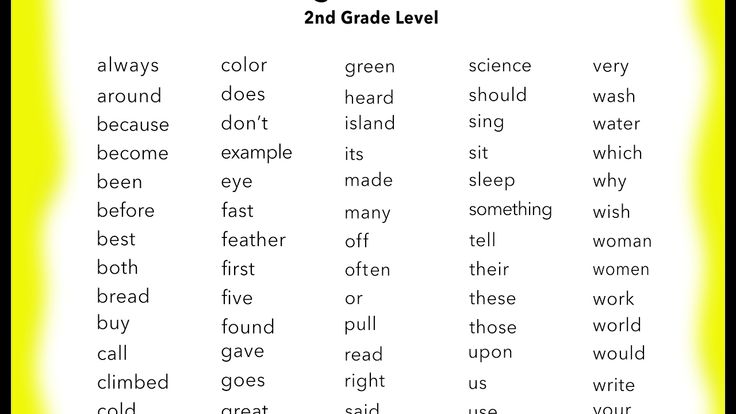 You can play a game where you and your child take turns naming different groups of words: “Name all the pets you know!”, “Now fish”, “Now list your friends”, etc. When listing words, pause so that the child asks you to continue. Make mistakes sometimes so your child can correct you.
You can play a game where you and your child take turns naming different groups of words: “Name all the pets you know!”, “Now fish”, “Now list your friends”, etc. When listing words, pause so that the child asks you to continue. Make mistakes sometimes so your child can correct you.
Reasoning is more important than rote learning
It is clear that intelligence is more than the ability to recall facts or think quickly with flashcards. This is not only extracting the necessary information from long-term memory. True intelligence and genius are based on the ability to solve problems quickly, efficiently and innovatively. Therefore, the intellectual development of children should not be limited to cramming or passively watching educational DVDs and computer applications.
Attempts to "prepare for the test" with written exercises will not increase the child's intelligence. If you make a two-year-old kid learn the multiplication table, you will surely impress others, but you will not get a guarantee that he will become a mathematical genius. On the contrary, it may delay the development of his ability to solve mathematical problems by reasoning.
On the contrary, it may delay the development of his ability to solve mathematical problems by reasoning.
An intellectually supportive environment for children is one that allows the mastery of all nine broad abilities in a functional, everyday context.
Recommended book:
The most interesting thing is in your mail.
We send a digest of the best articles every two weeks.
By completing this form, I confirm that that I have read the Rules of the site, and I consent to the processing personal data.
reCAPTCHA is used in accordance with the Google Policies and Terms of Use.
Thank you for subscribing!
See also
10 books worth buying for children and parents at MIBF
The Tales, Stories of Connie and the Life Lessons of Steve Jobs
See also
What to read right now: news in February
Sometimes reading is the best remedy against decay and blues.